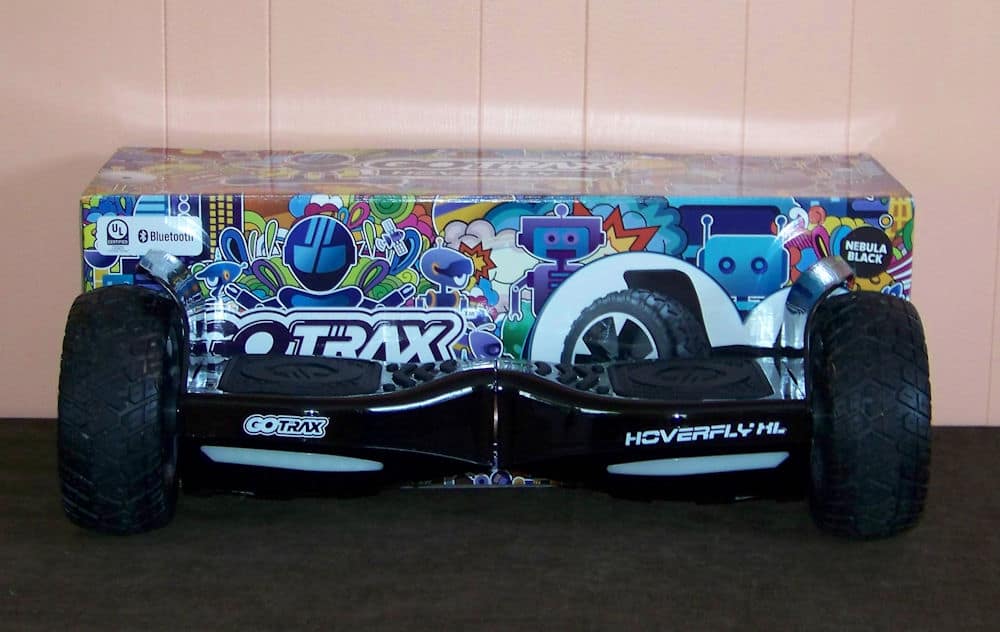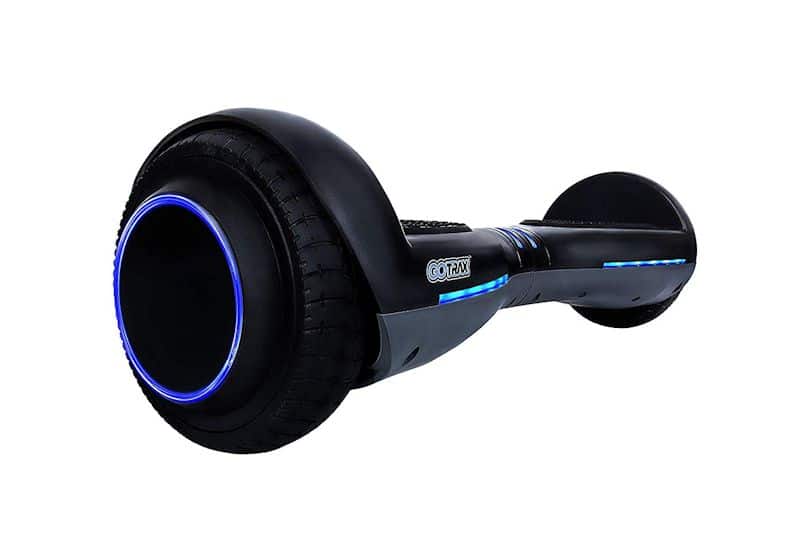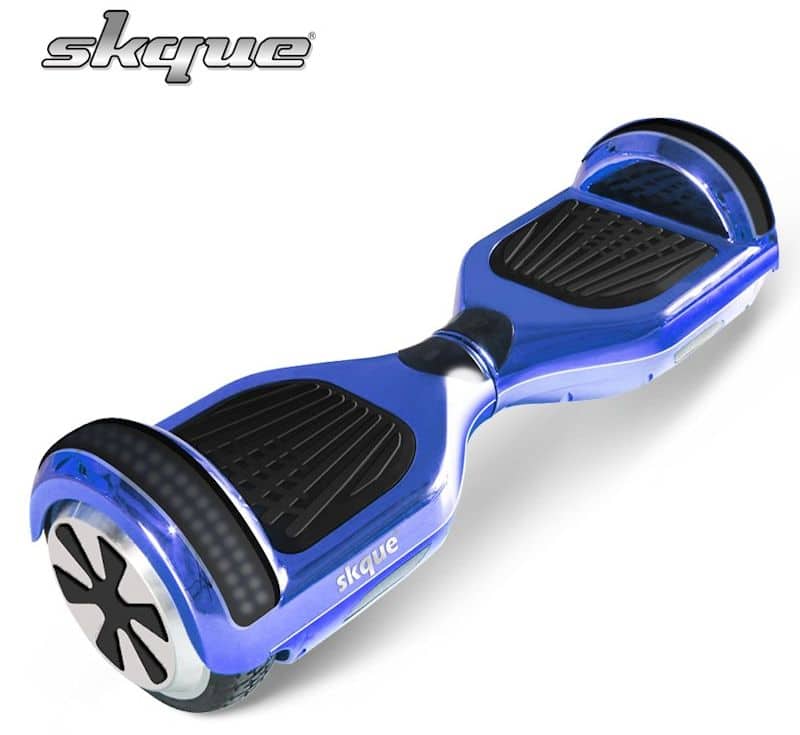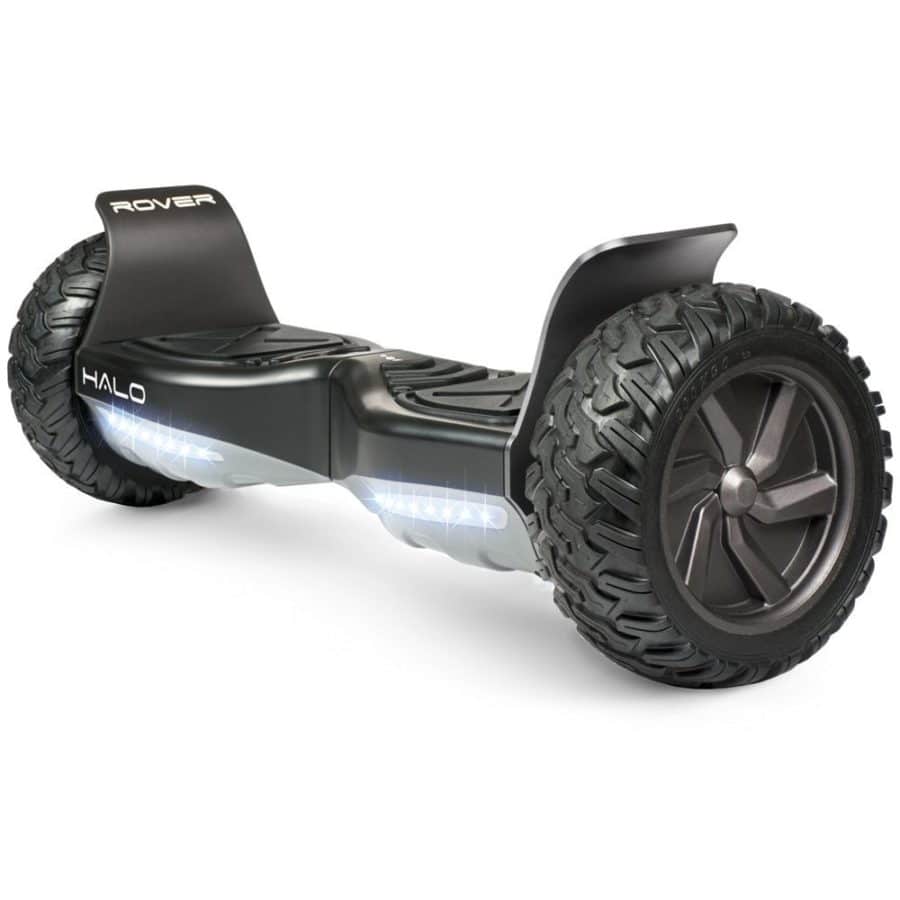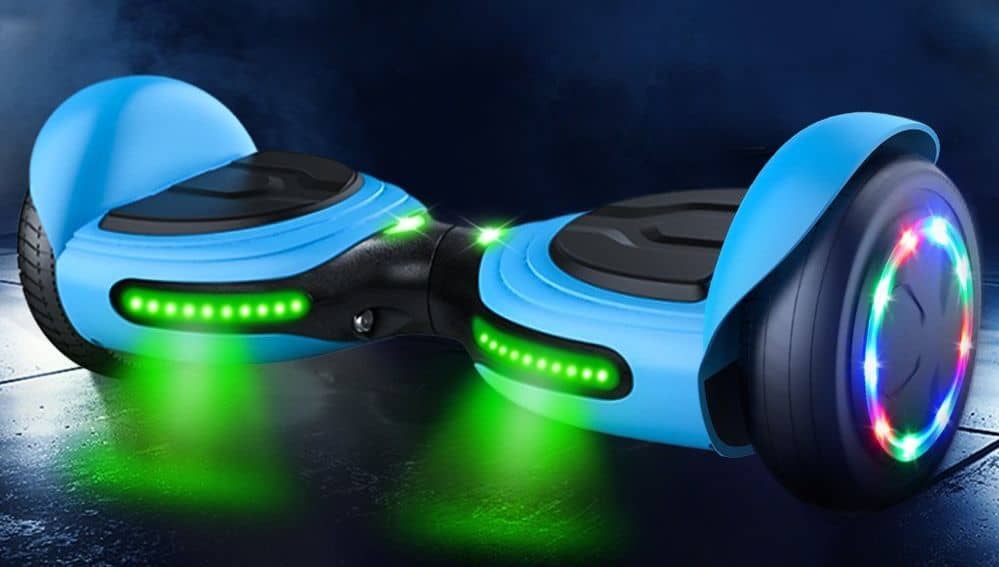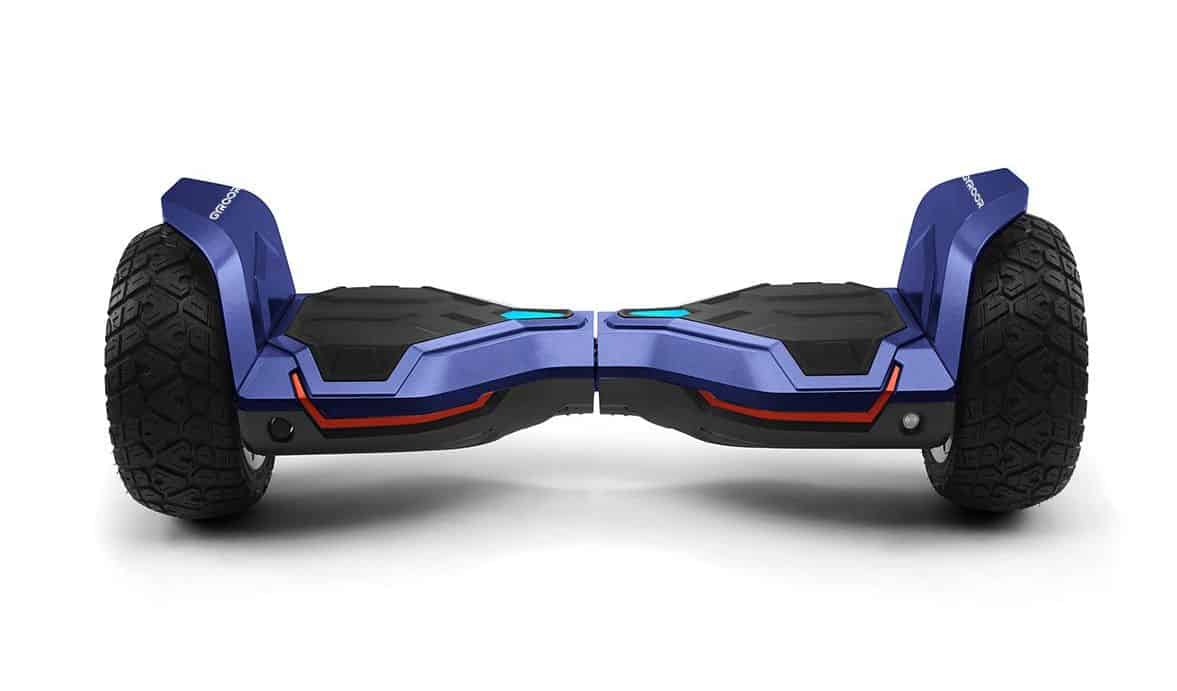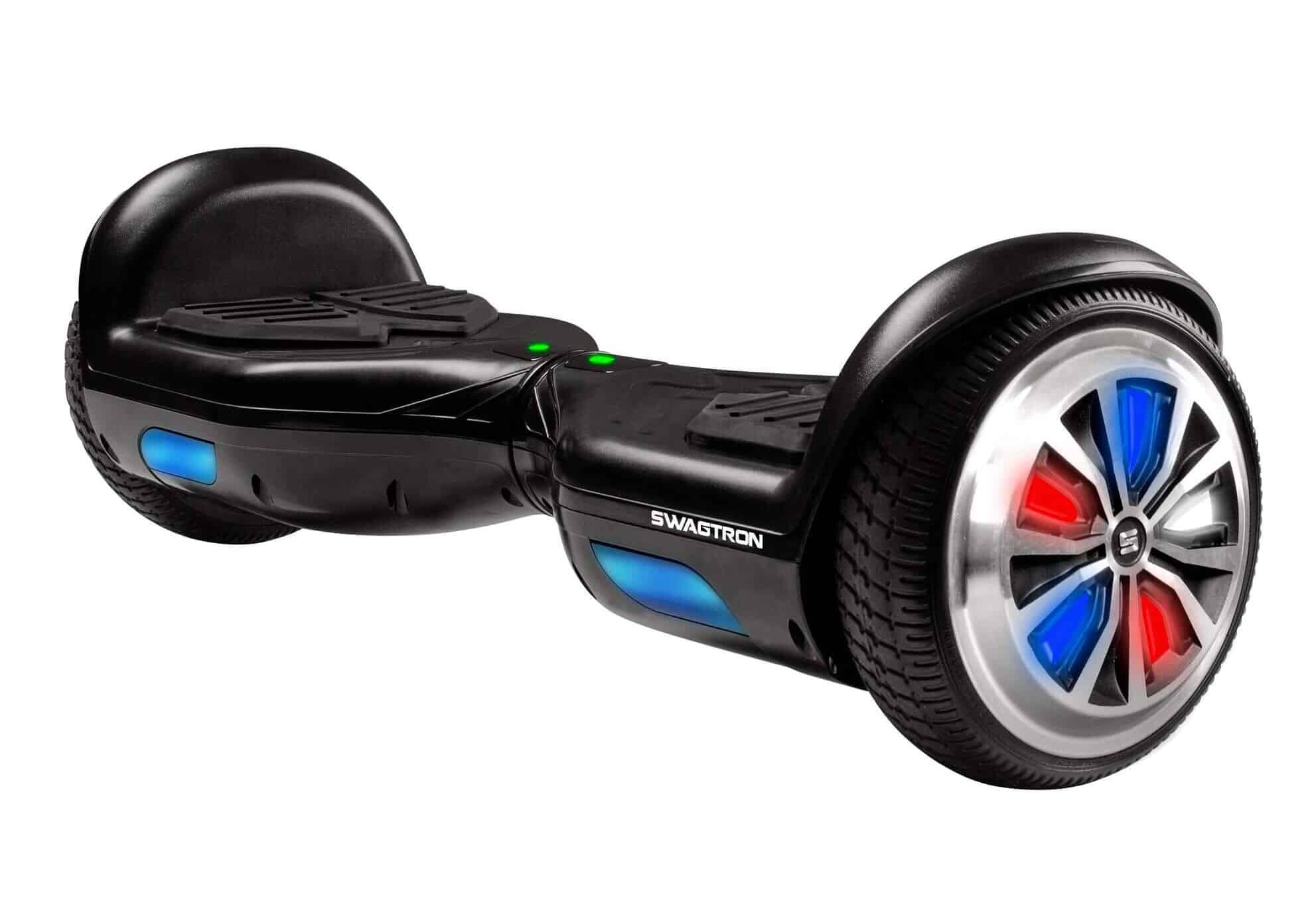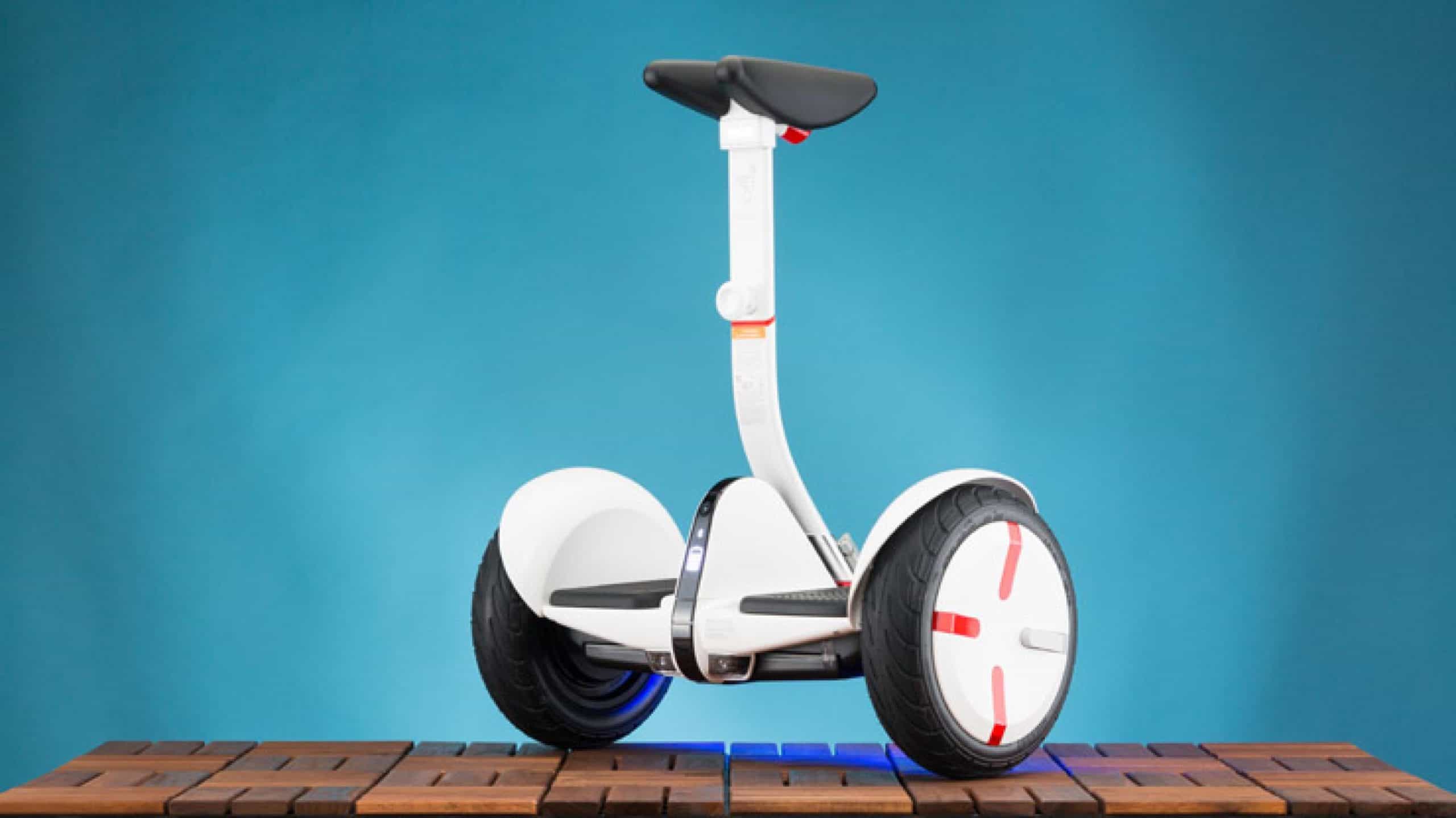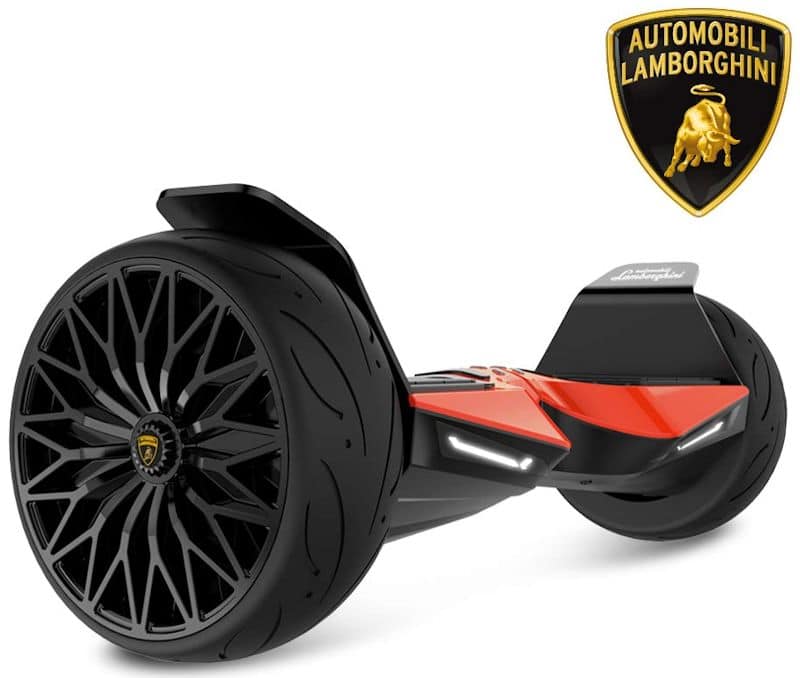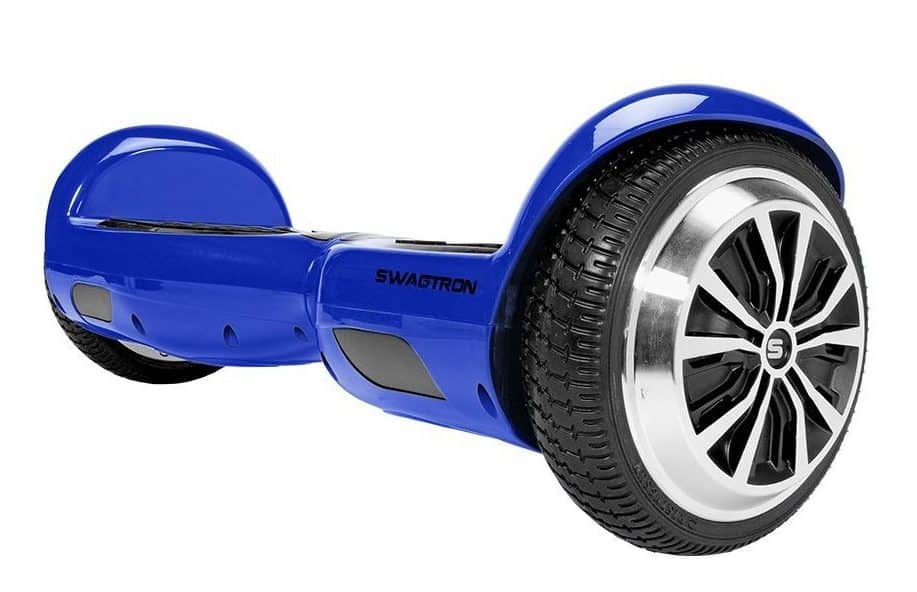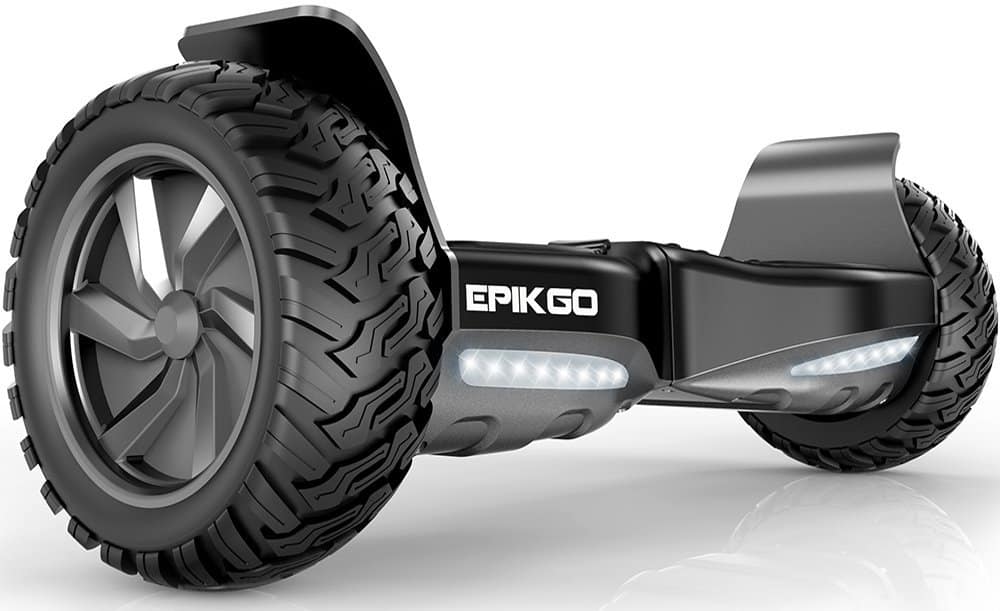Hoverboards, also known as self-balancing boards, have an intricate series of parts designed to make them easy to move. Outside of two wheels and a platform, its inner circuitry is a very elaborate set of parts, reading speeds, tilt angles, and other body positions to move accordingly. It is quite a genius setup, as close to reading one’s brain as you can get using today’s technology. Keep reading to learn more about how a hoverboard works, what they are, what hoverboard components consist of, and how to perform basic maneuvers.
How Does a Hoverboard Work?
A good hoverboard consists of four key components – a platform, set of wheels, a battery-powered electric motor, gyroscopes, and sensors. Wheel-mounted tilt sensors pass data to gyroscopes, which work to keep the board upright. Each foot pad contains pressure sensors, which fire a signal that moves the platform depending on the rider’s feet position. Leaning forward evokes once sensor reaction and leaning backward evokes another reaction.
Both motors operate independently, which means the hoverboard can also move in circles. With plenty of practice, one can master all of the movements and learn how to ride a hoverboard in no time.
What are a Hoverboard’s Components?
A hoverboard consist of the following main components:
A wheel sensor contains tilt and speed sensors that pass back data to gyroscopes. These gyroscopes are responsible for controlling each wheel’s RPM speeds, passing it back to the main logic board which controls movement.
The logic board is your hoverboard’s brain, responsible for controlling overall speed, each individual wheel’s speed/tilt controls, and power.
Battery packs typically use a 36V 4400mAH battery. Some hoverboards may use more or less power. Just be sure to do your research on how to buy a good hoverboard before making a purchase.
How Do I Move Forward, Backward, Stop, and Turn?
Performing basic movements with a hoverboard is very simple. Be sure to ride on a flat and even surface. Step on the hoverboard one foot at a time and stand up straight. To move forward, slightly lean forward. To move backward slightly lean backward, placing more weight on the heels. To turn, push your right toes down. To turn right, push your left toes down. The harder you press your shoes against the platform, the sharper the turn. With enough practice, you will definitely get all of the steps down.
Tip: To move forward, slightly lean forward. To move backward slightly lean backward, placing more weight on the heels. To turn, push your right toes down. To turn right, push your left toes down
To perform a spinning maneuver, simply push down your toes on one foot and press your opposite foot’s heels down. Expect to take roughly 20 to 30 minutes to master the art of circling.
Tip: To perform a spinning maneuver, simply push down your toes on one foot and press your opposite foot’s heels down
Related Post: What is the Original Hoverboard Brand?
Sources:
https://eridehero.com/blog/how-does-a-hoverboard-work/
*https://swagtron.com/news/how-does-a-hoverboard-work/
https://www.wonderopolis.org/wonder/how-does-a-hoverboard-work
https://www.streetsaw.com/pages/how-does-a-hoverboard-work
https://gotrax.com/blogs/news/what-is-a-hoverboard-and-how-does-it-work
*https://swagtron.com/faq/hoverboards/how-do-hoverboards-balance/

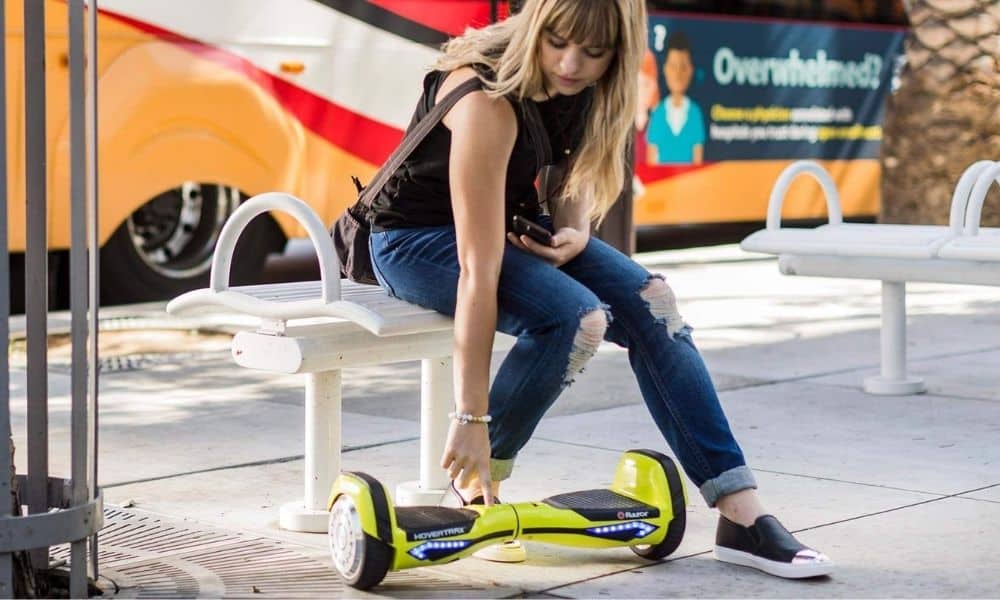














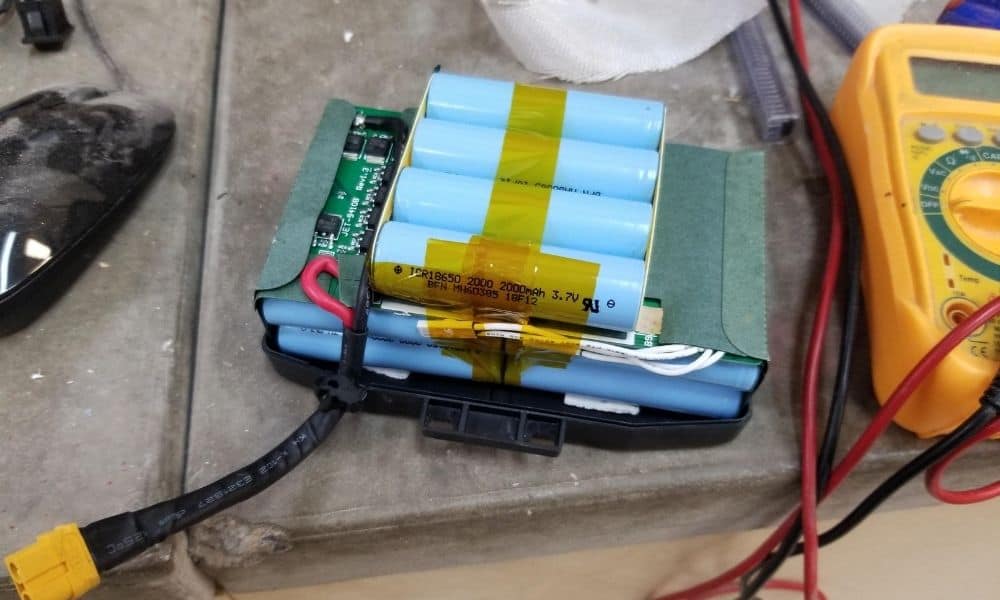
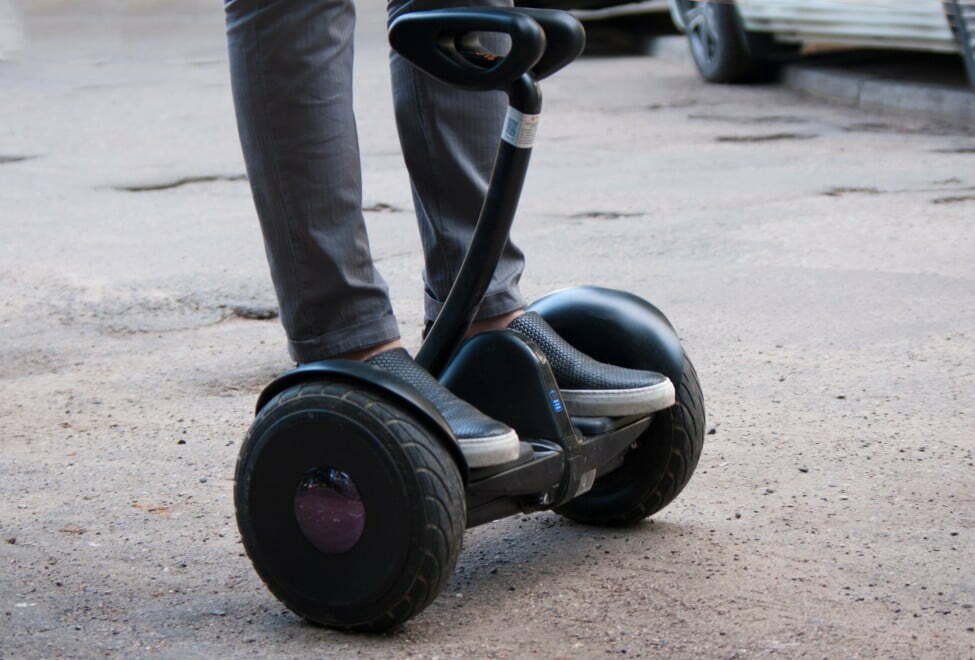
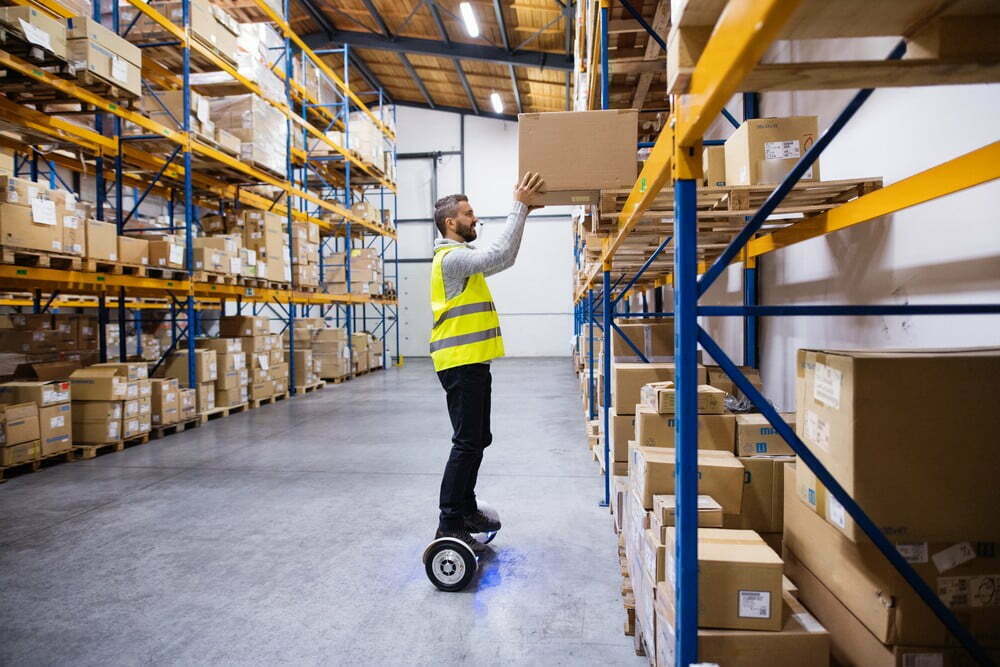
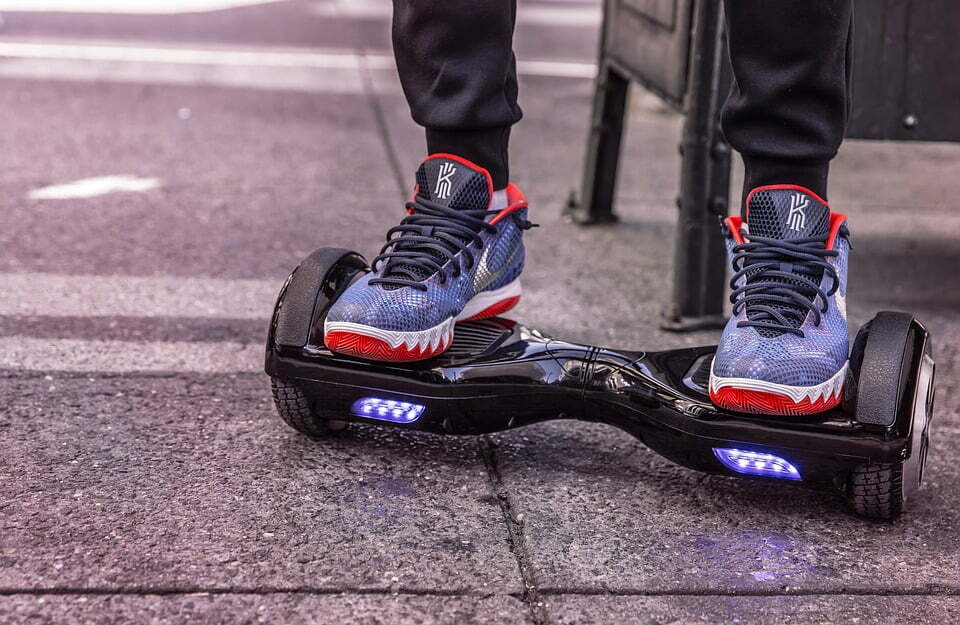
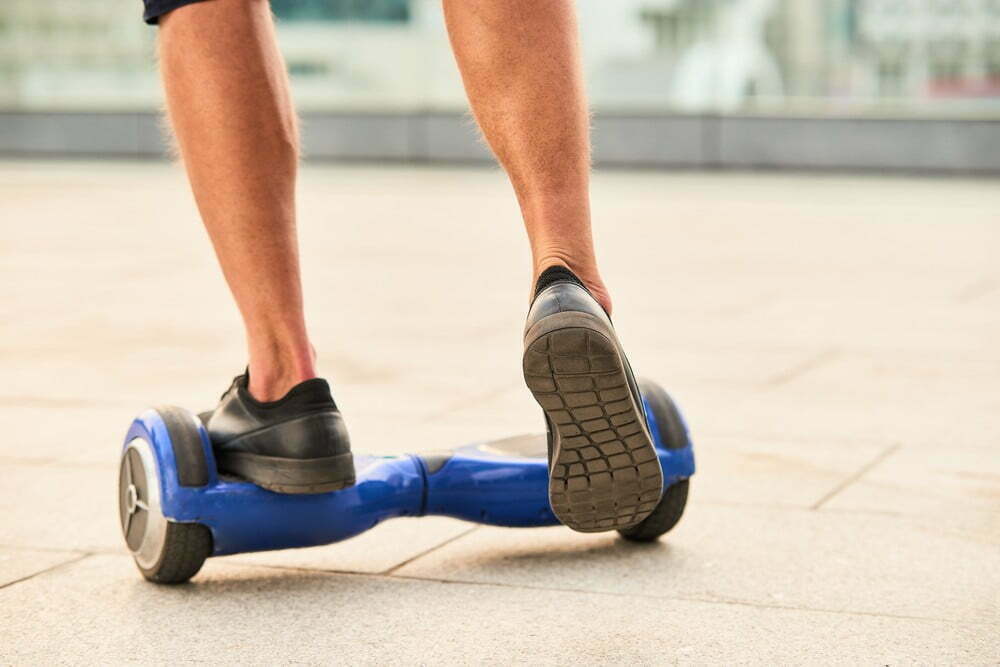
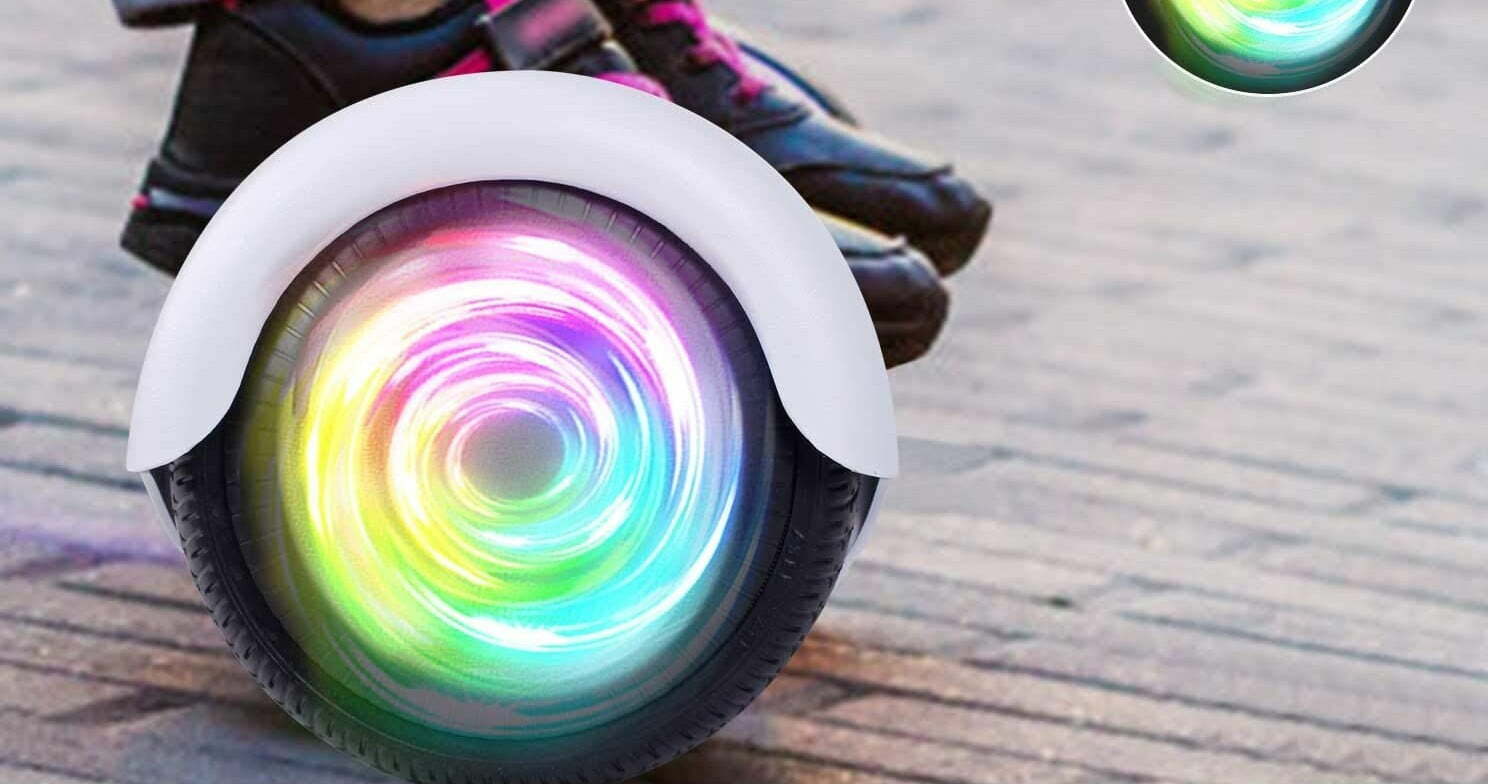
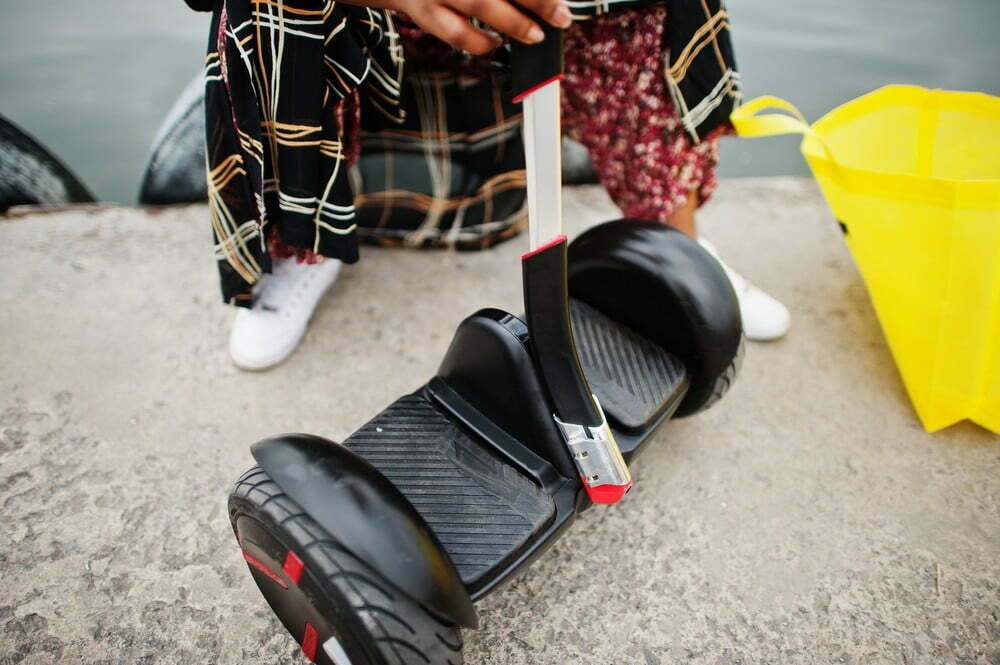
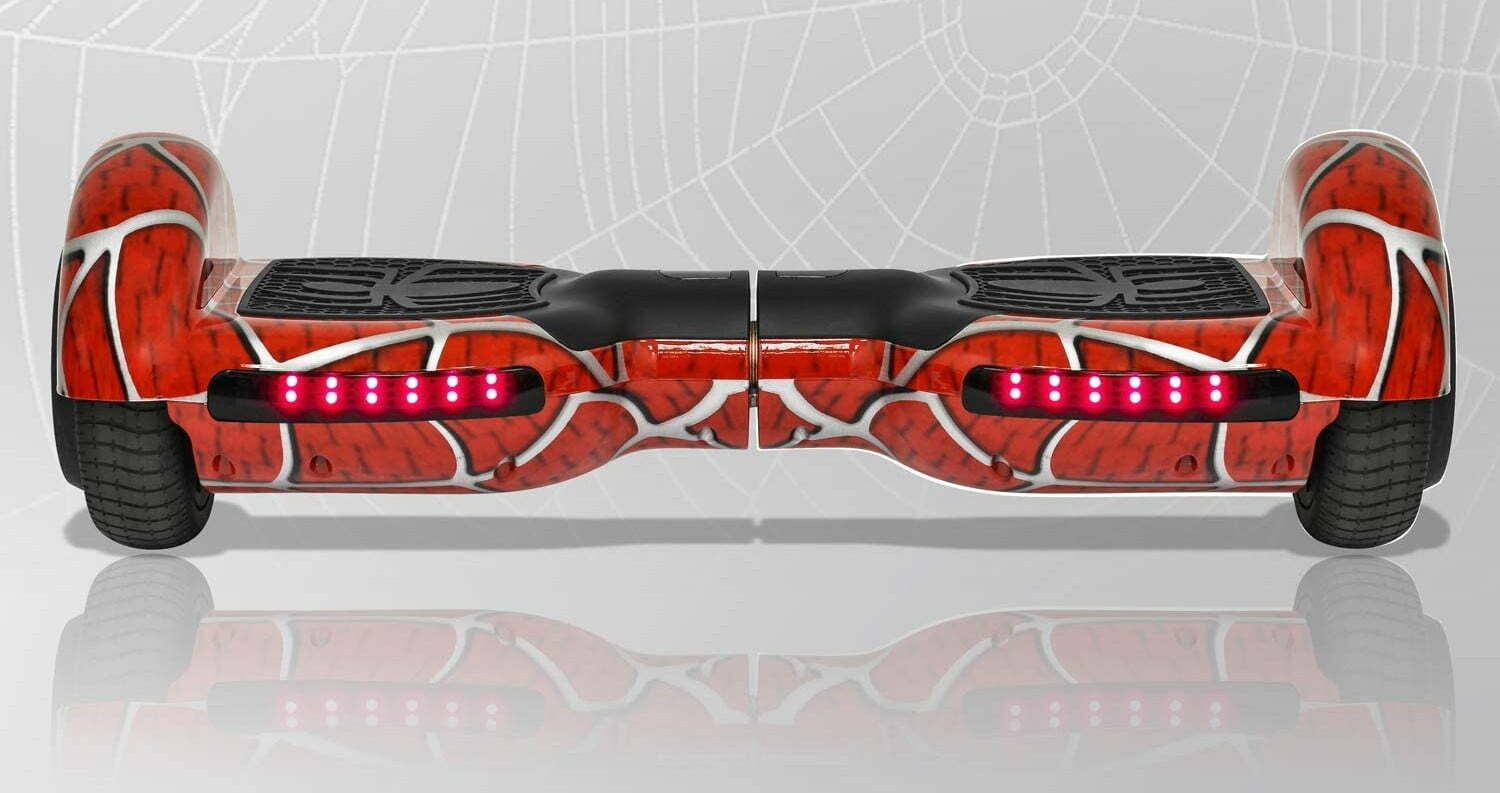
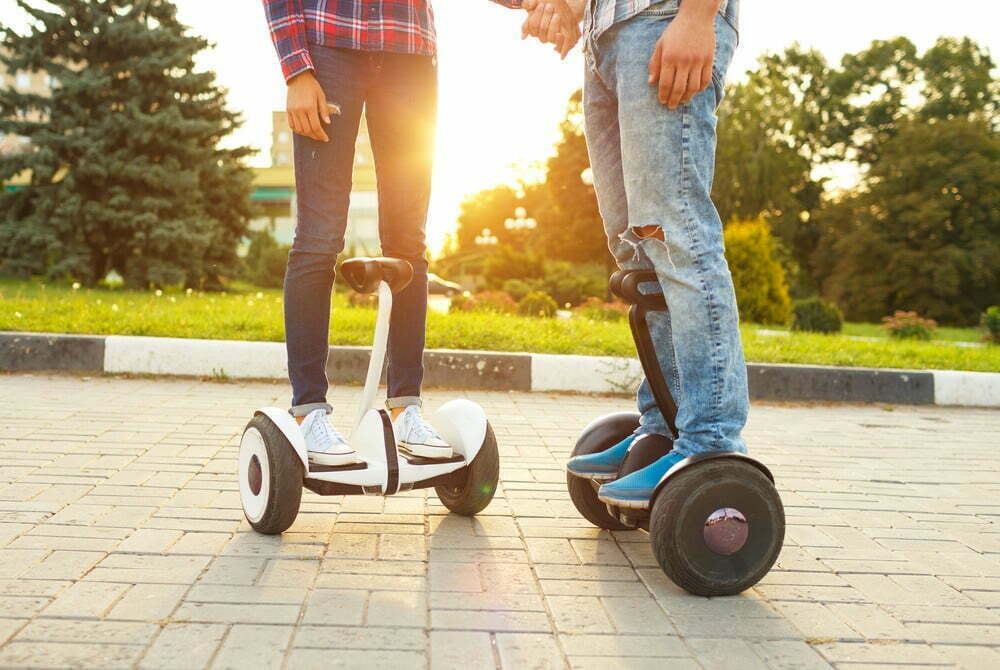
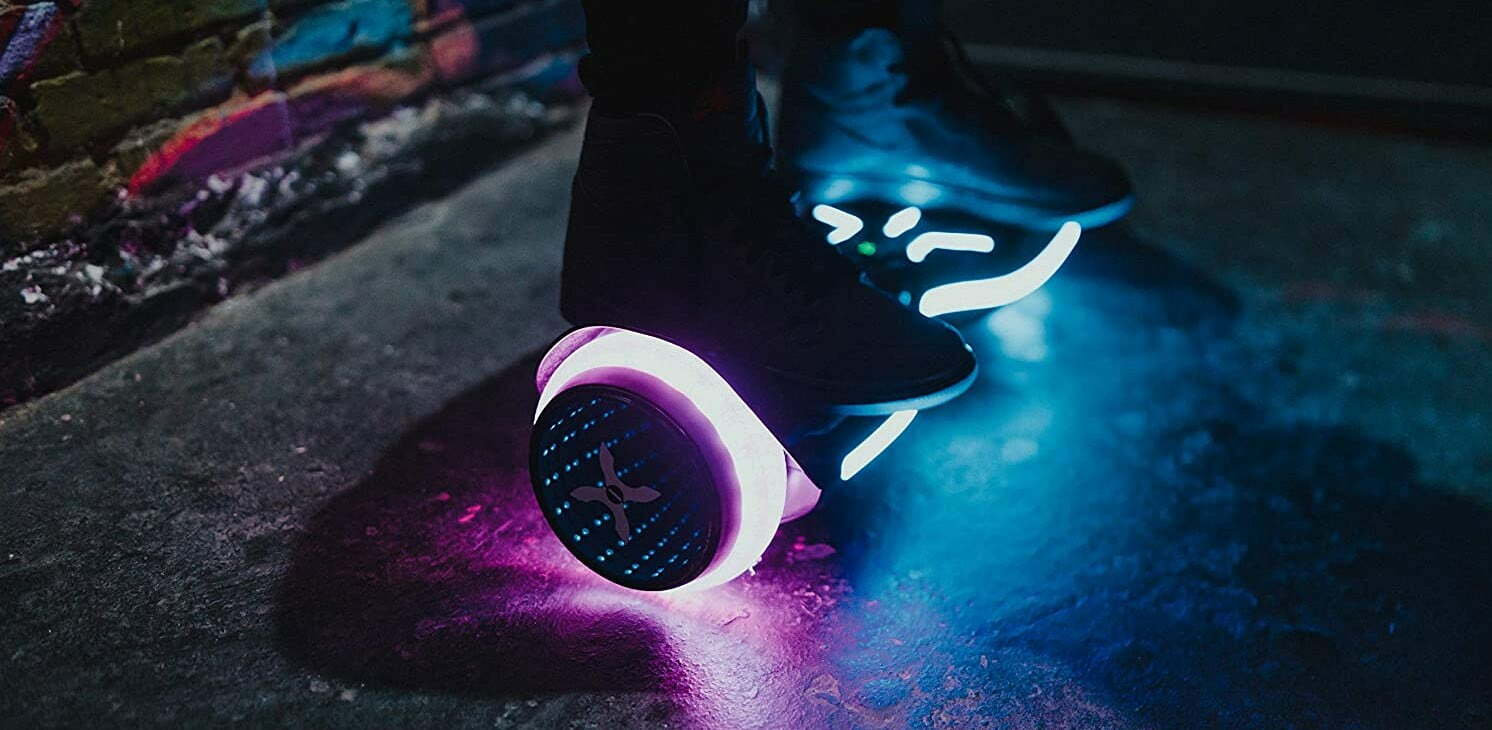
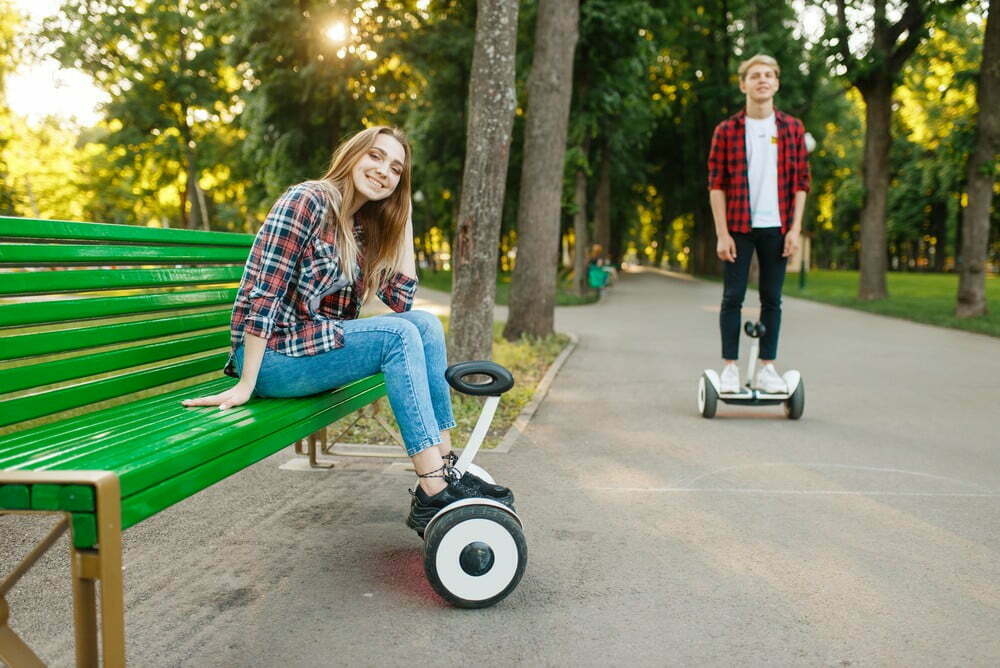
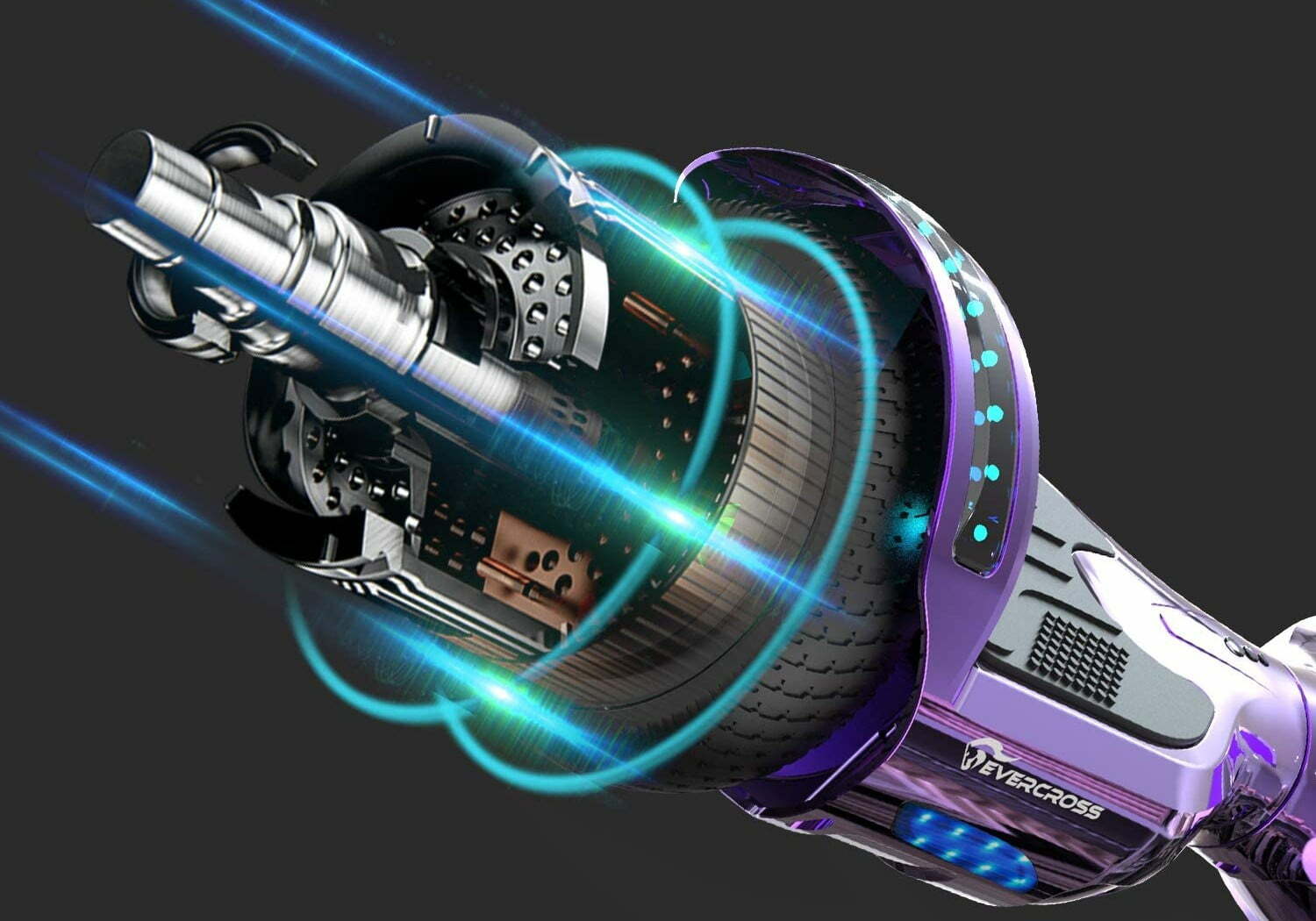
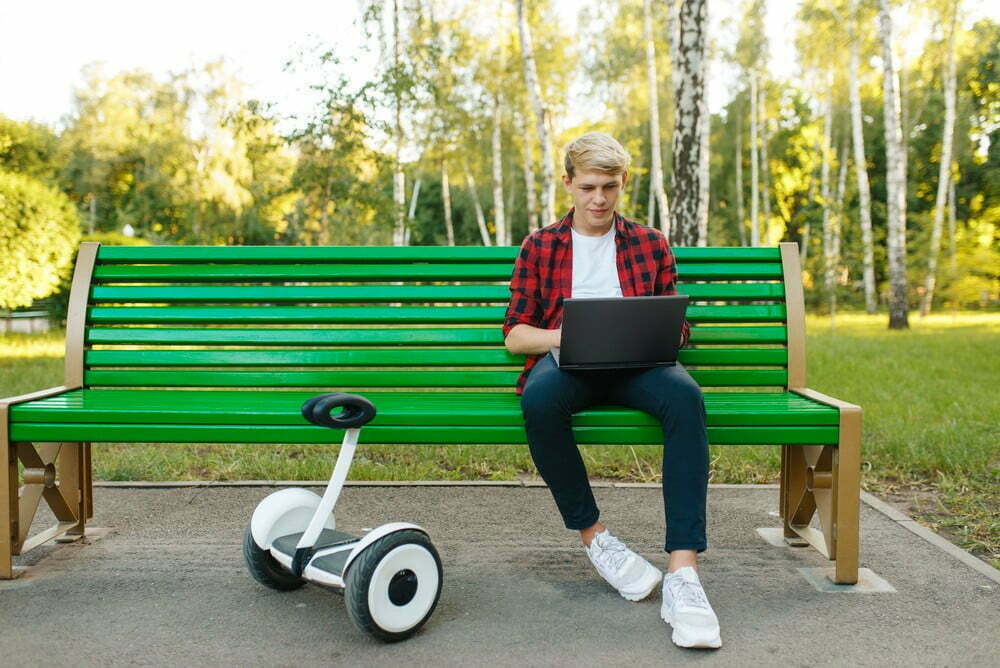
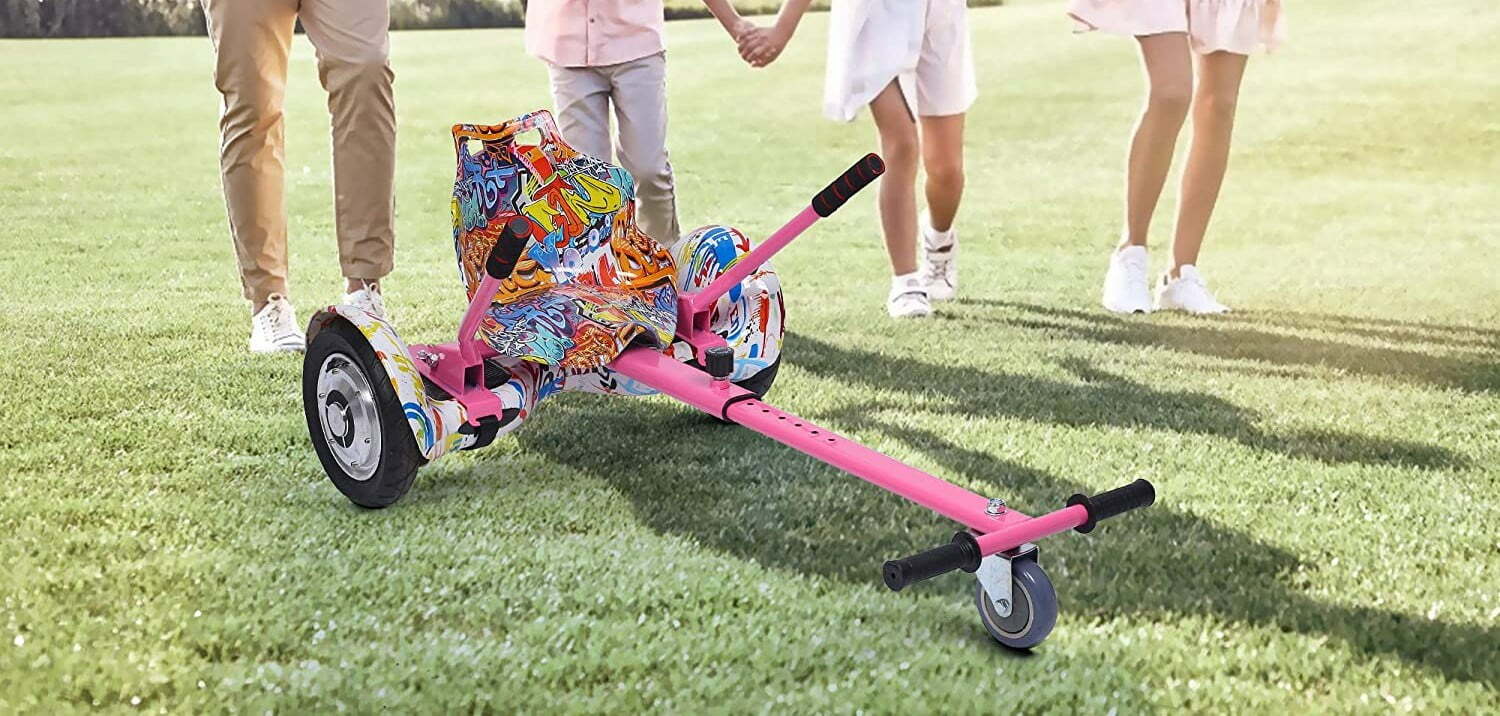
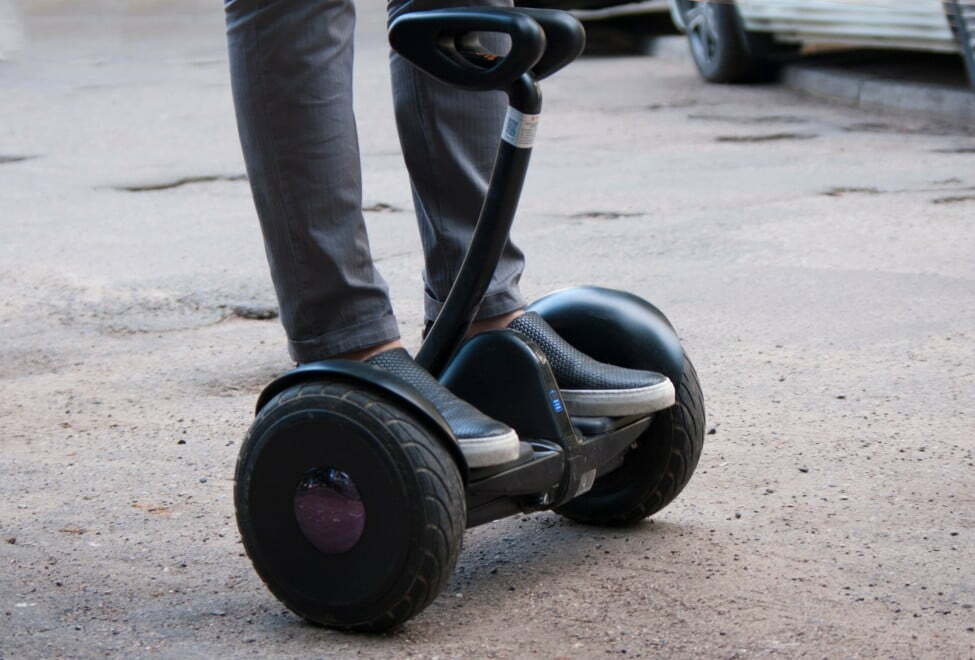
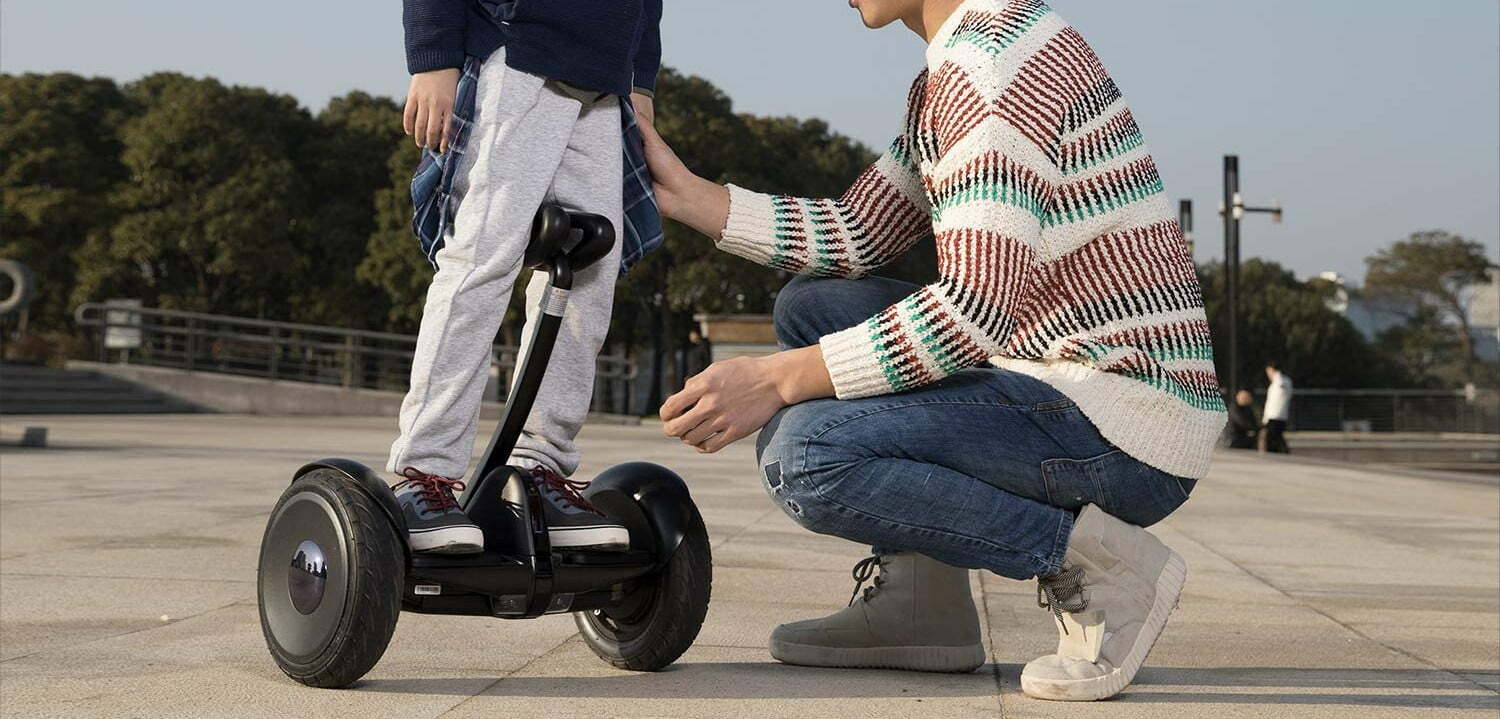
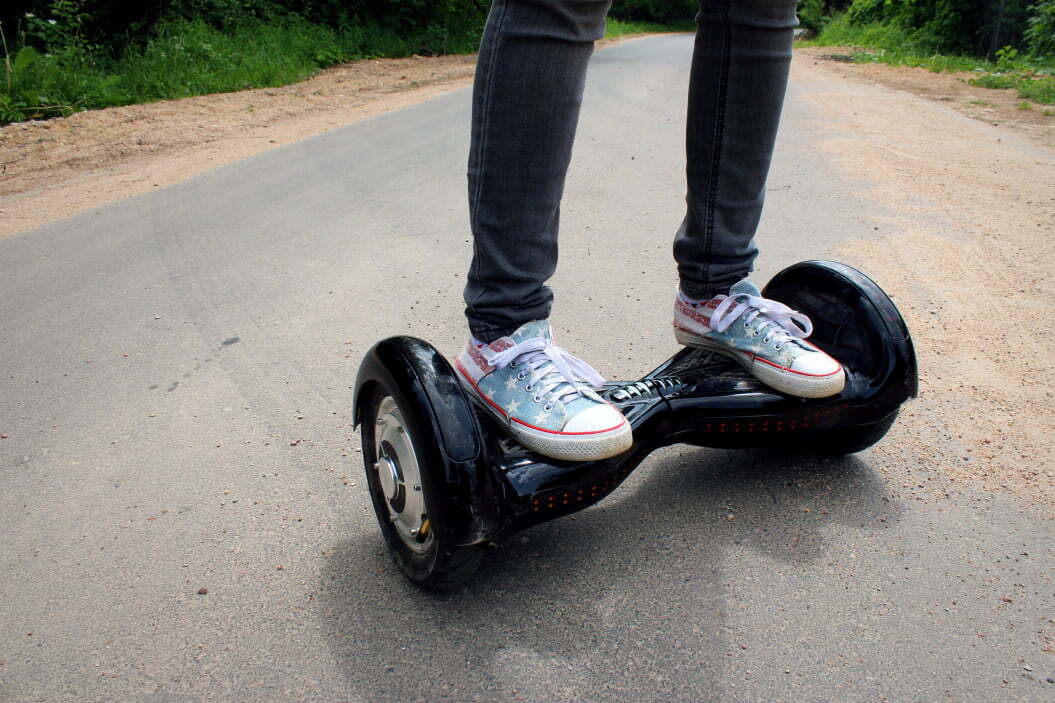
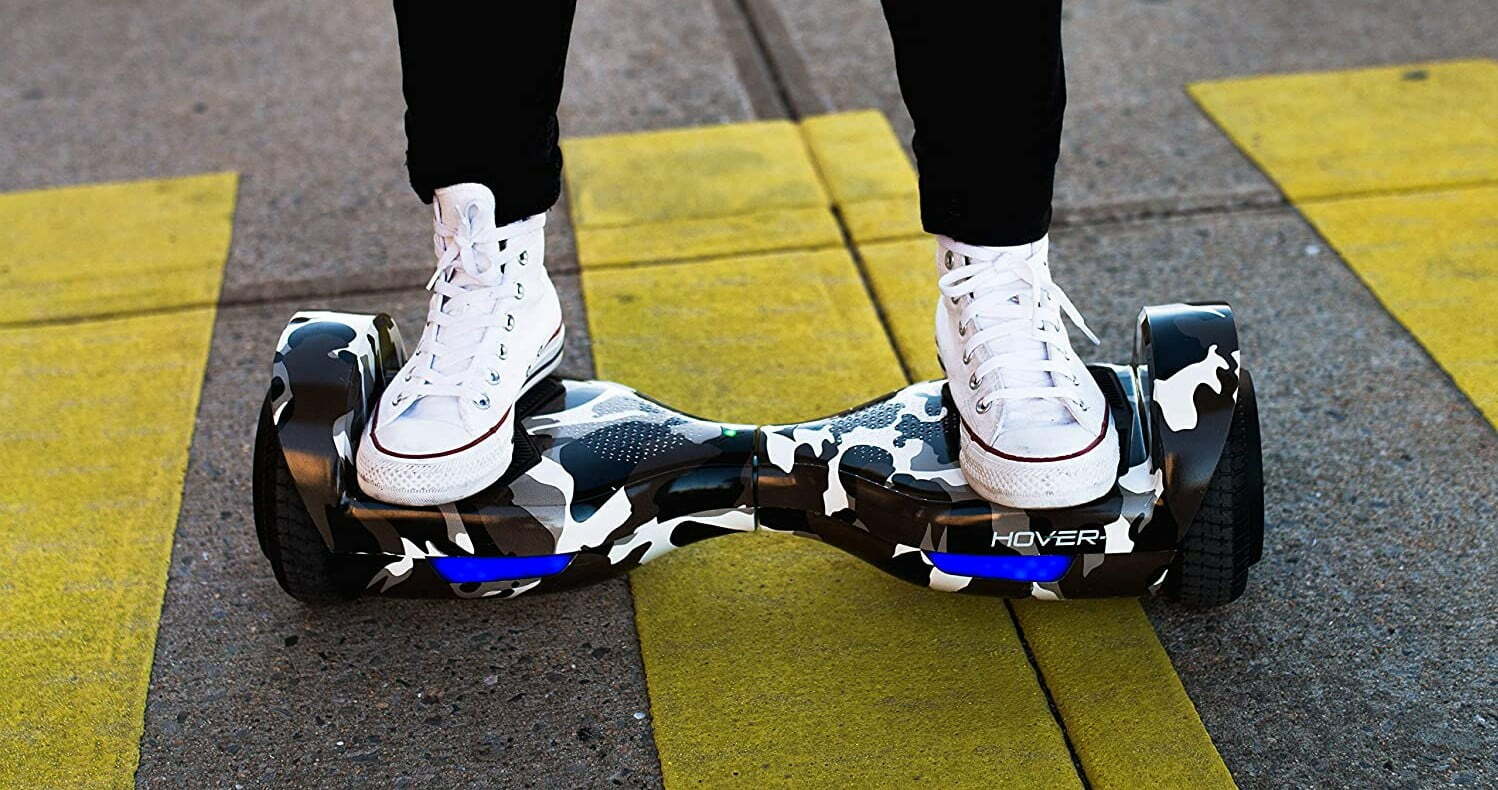
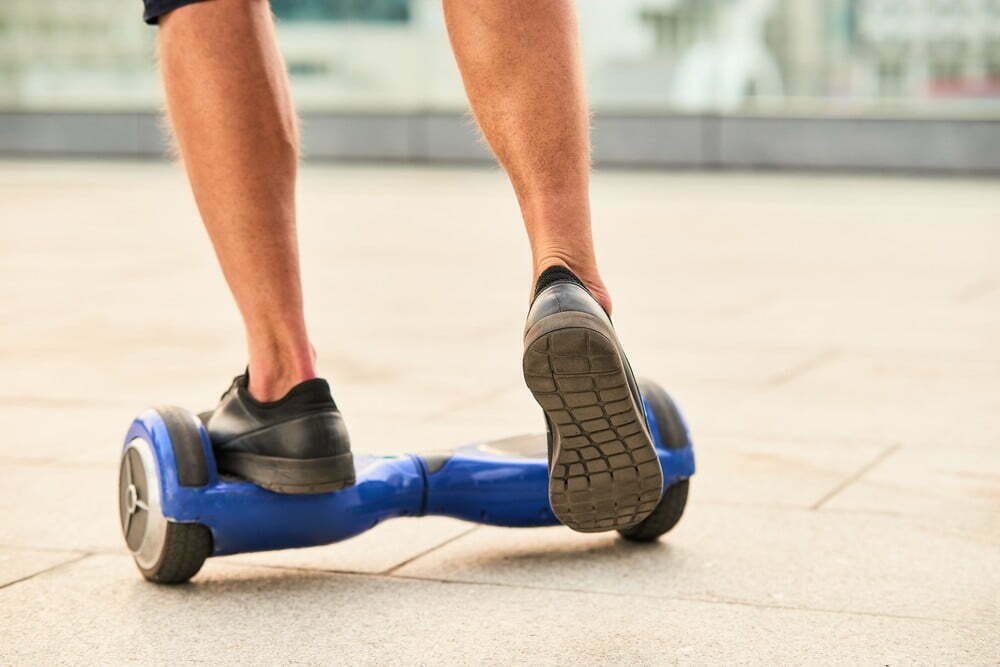
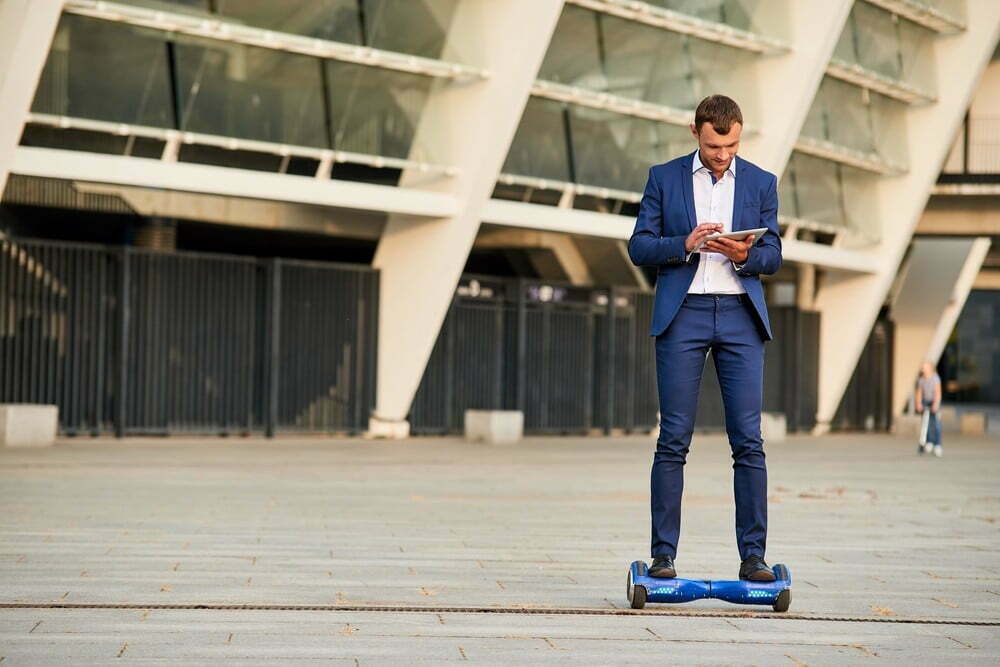
![Best 10 Inch Hoverboards in [year] 27 Best 10 Inch Hoverboards in 2025](https://www.gadgetreview.dev/wp-content/uploads/best-10-inch-hoverboard-image.jpg)
![Best Single Wheel Hoverboards in [year] 28 Best Single Wheel Hoverboards in 2025](https://www.gadgetreview.dev/wp-content/uploads/best-single-wheel-hoverboard-image.jpg)
![Best 8 Inch Hoverboards in [year] 29 Best 8 Inch Hoverboards in 2025](https://www.gadgetreview.dev/wp-content/uploads/best-8-inch-hoverboard-image.jpg)
![Best Hoverboards for Girls in [year] 30 Best Hoverboards for Girls in 2025](https://www.gadgetreview.dev/wp-content/uploads/best-hoverboards-for-girls-image.jpg)
![Best Hoverboards for Adults in [year] 31 Best Hoverboards for Adults in 2025](https://www.gadgetreview.dev/wp-content/uploads/best-hoverboard-for-adults-image.jpg)
![Best Hoverboard Accessories in [year] 32 Best Hoverboard Accessories in 2025](https://www.gadgetreview.dev/wp-content/uploads/best-hoverboard-accessories-image.jpg)
![Best 6.5 Inch Hoverboards in [year] 33 Best 6.5 Inch Hoverboards in 2025](https://www.gadgetreview.dev/wp-content/uploads/best-6.5-inch-hoverboard-image.jpg)
![Best Bluetooth Hoverboards in [year] 34 Best Bluetooth Hoverboards in 2025](https://www.gadgetreview.dev/wp-content/uploads/best-bluetooth-hoverboards-image.jpg)
![Best Knee Pads for Hoverboards in [year] 35 Best Knee Pads for Hoverboards in 2025](https://www.gadgetreview.dev/wp-content/uploads/best-knee-pads-for-hoverboard-image.jpg)
![Best Hoverboard for Beginners in [year] 36 Best Hoverboard for Beginners in 2025](https://www.gadgetreview.dev/wp-content/uploads/best-hoverboards-for-beginners-image.jpg)
![Best Helmets for Hoverboards in [year] 37 Best Helmets for Hoverboards in 2025](https://www.gadgetreview.dev/wp-content/uploads/best-helmet-for-hoverboard-image.jpg)
![Best Hoverboard Carrying Bags in [year] 38 Best Hoverboard Carrying Bags in 2025](https://www.gadgetreview.dev/wp-content/uploads/best-hoverboard-carrying-bag-image.jpg)
![Best Hoverboard Seats in [year] 39 Best Hoverboard Seats in 2025](https://www.gadgetreview.dev/wp-content/uploads/best-hoverboard-seat-image.jpg)
![Best Hoverboard in [year] ([month] Reviews) 40 Best Hoverboard in 2025 (November Reviews)](https://www.gadgetreview.dev/wp-content/uploads/best-hoverboard-image.jpg)
![Fastest Hoverboard in [year] ([month] Reviews) 41 Fastest Hoverboard in 2025 (November Reviews)](https://www.gadgetreview.dev/wp-content/uploads/fastest-hoverboard-epikgo.jpg)
![Best Hoverboard For Kids in [year] ([month] Reviews) 42 Best Hoverboard For Kids in 2025 (November Reviews)](https://www.gadgetreview.dev/wp-content/uploads/Best-Hoverboards-For-Kids.jpg)
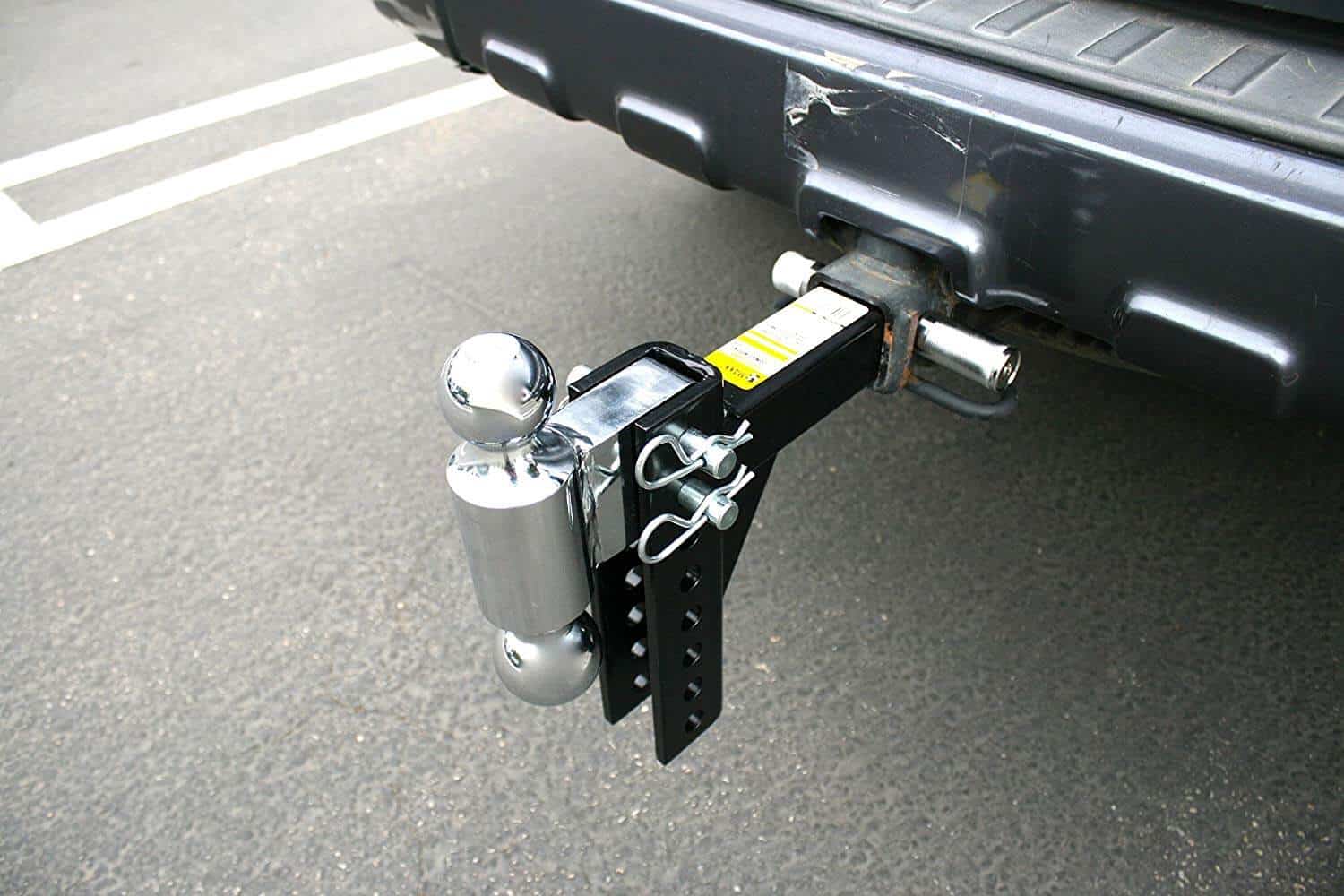
![Best RV Battery in [year] ( [month] Reviews) 44 Best RV Battery in 2025 ( November Reviews)](https://www.gadgetreview.dev/wp-content/uploads/best-rv-battery.jpg)
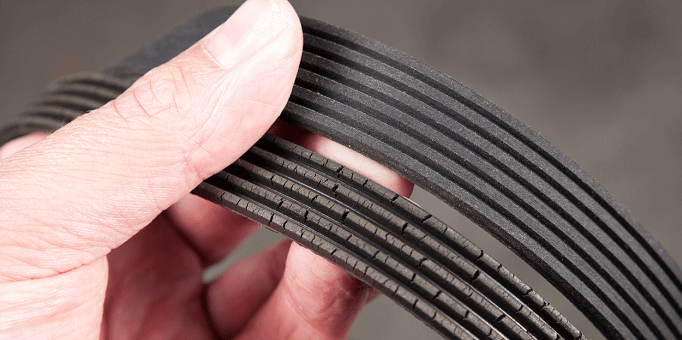
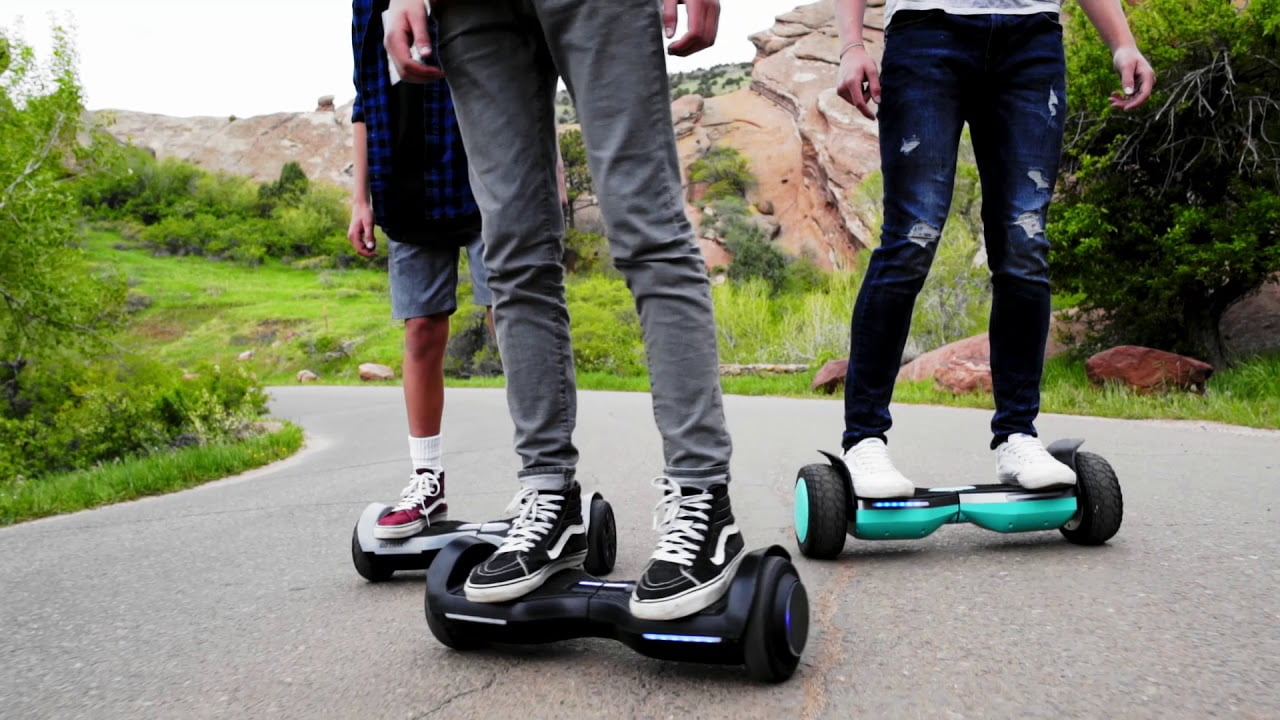
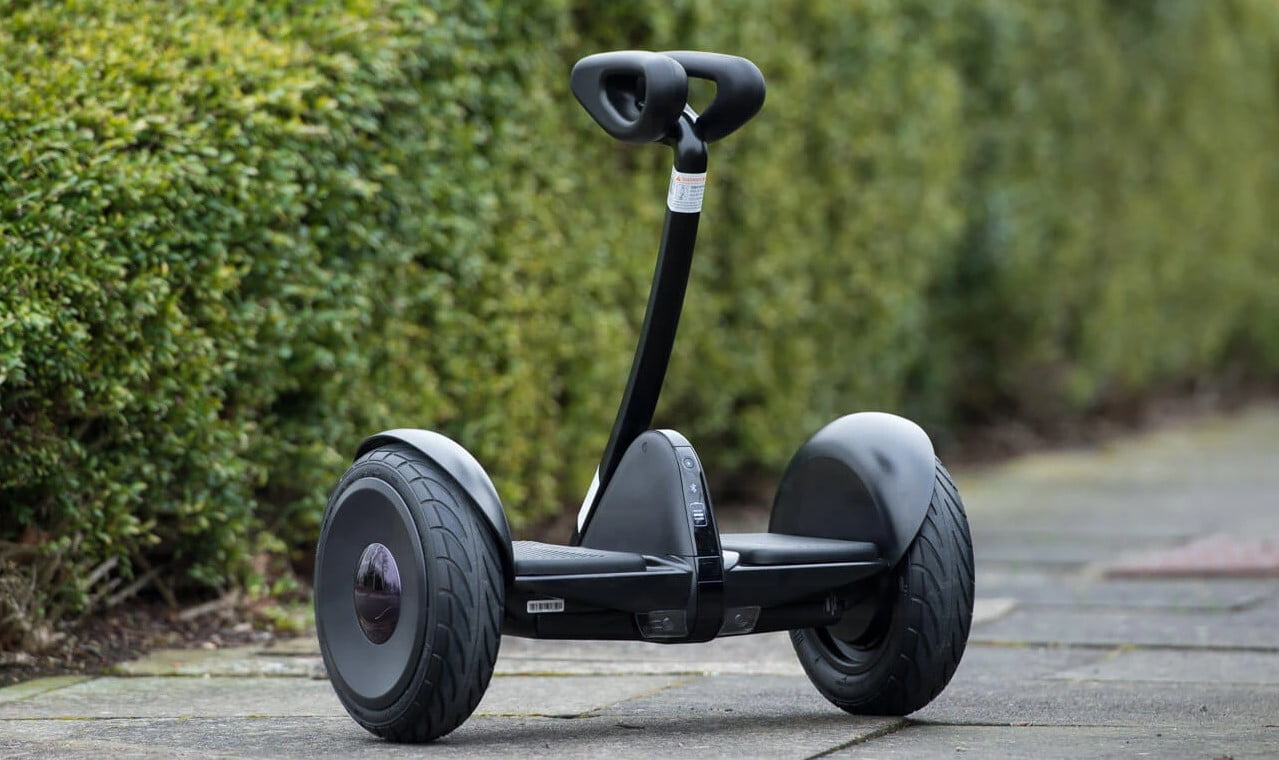
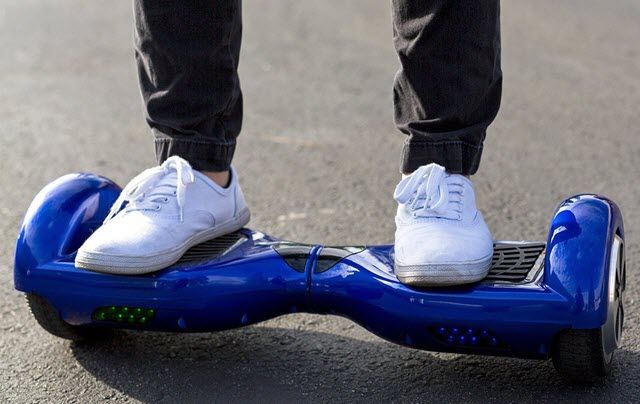
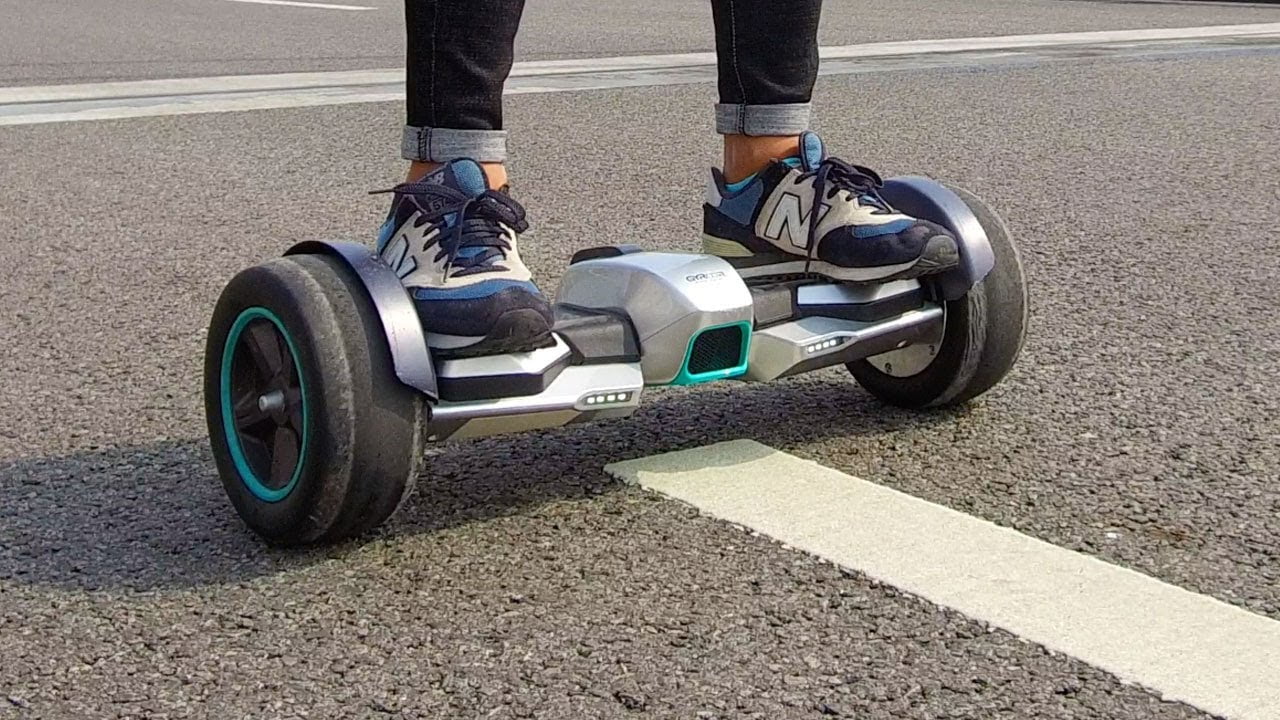
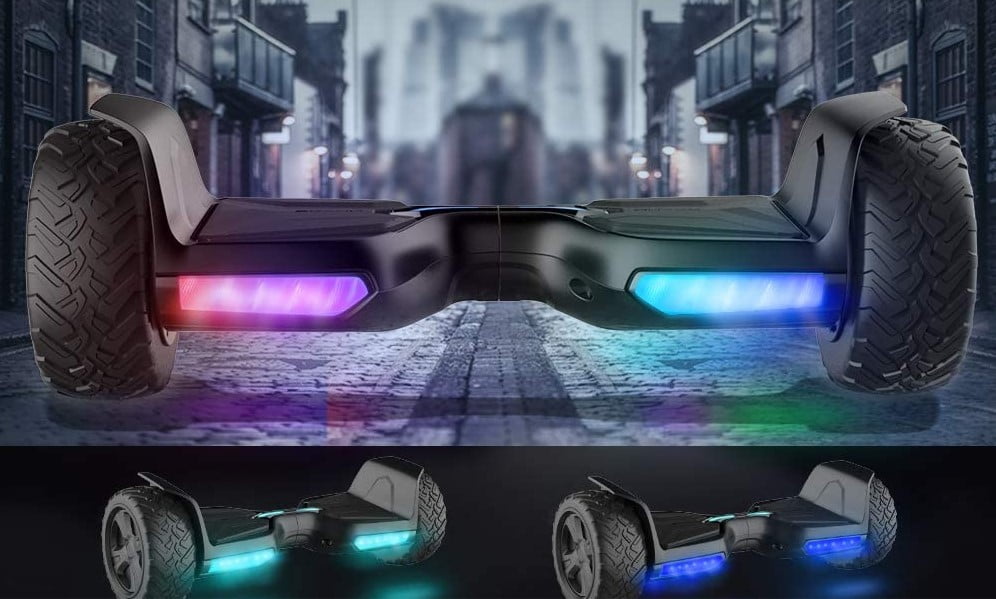
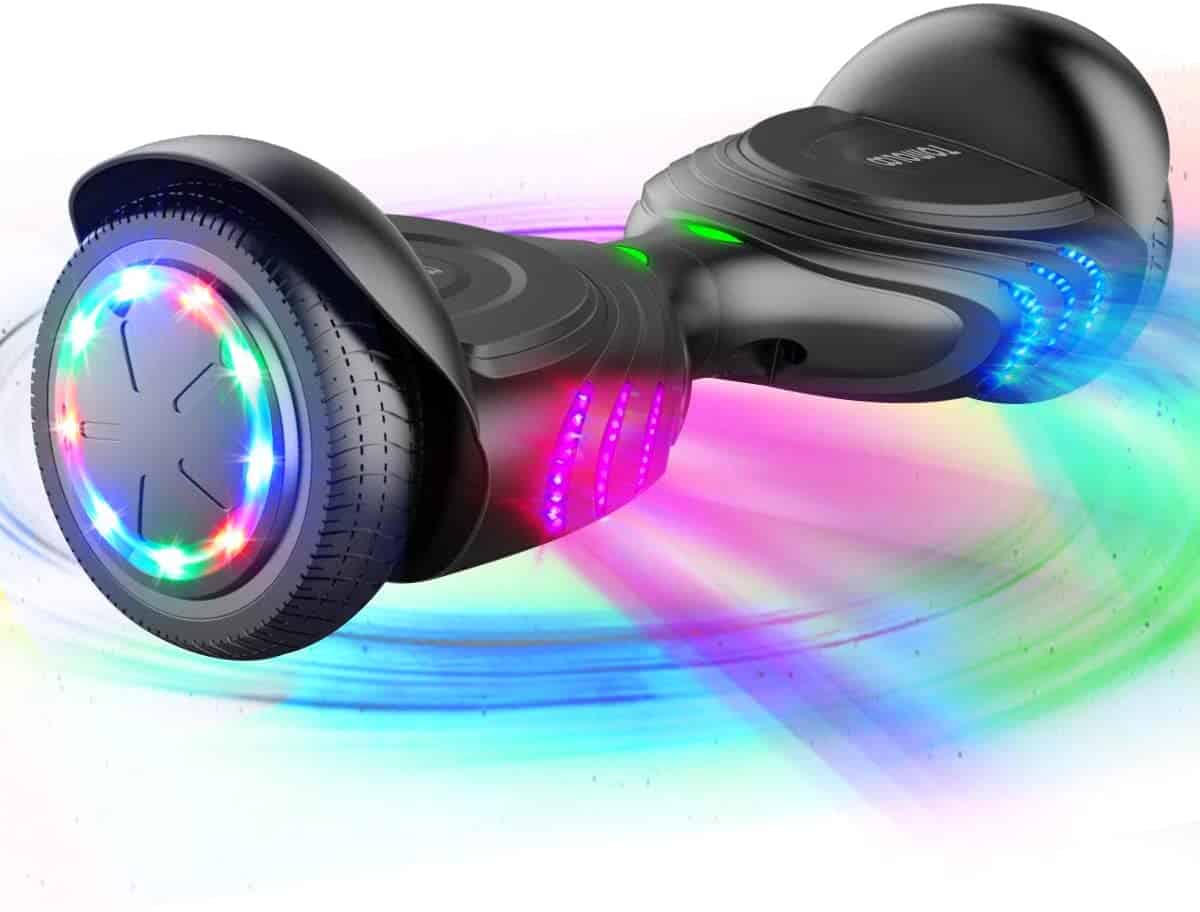
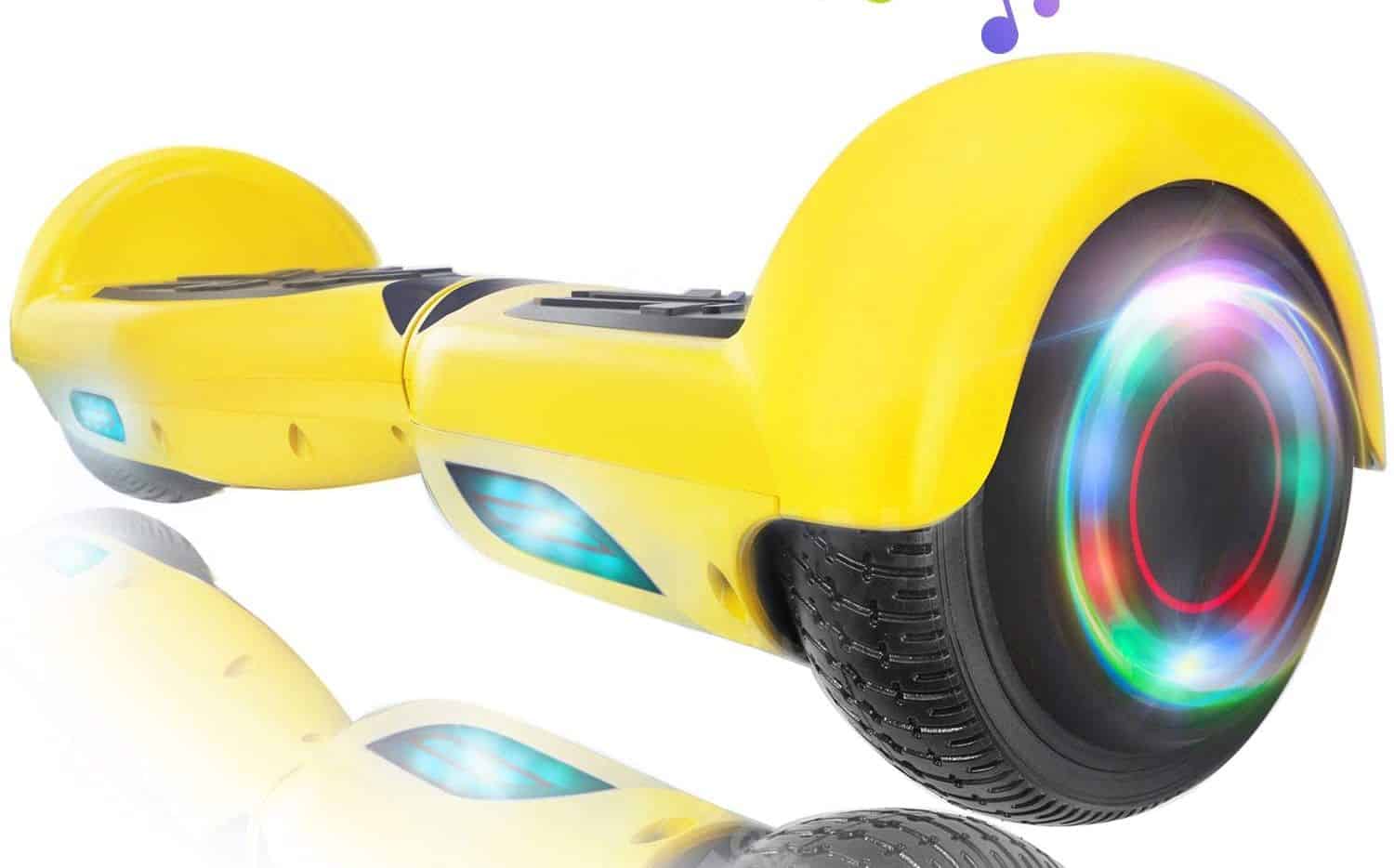
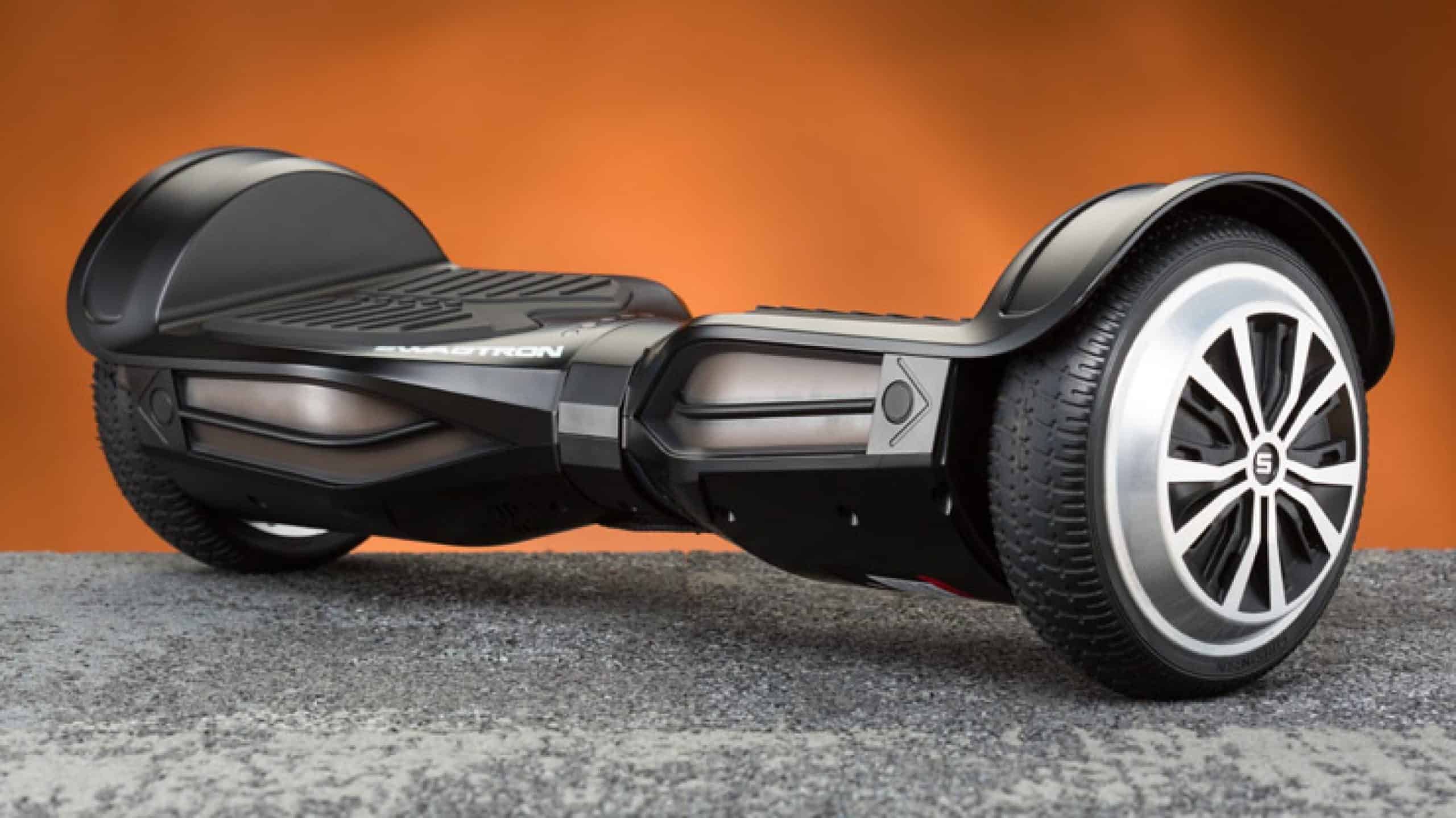
![Razor Hovertrax 2.0 Hoverboard Review in [year] 54 Razor Hovertrax 2.0 Hoverboard Review in 2025](https://www.gadgetreview.dev/wp-content/uploads/Razor-Hovertrax-2.0-Hoverboard-Review.jpg)
